Star Wars Film Analysis
How it works
The Star Wars saga, made by George Lucas, is a big deal in movie history. It’s not just famous for its films but has also changed pop culture, tech, and storytelling. Over the last forty years, it’s entertained millions and given a lot for folks to study. Let’s talk about how Star Wars has affected culture, tech, and storytelling, with some good old research and smart insights to back it up.
- 1 Tech Stuff and Movie Magic
- 2 Stories and Myths
- 3 A Worldwide Cultural Hit
- 4 Wrapping Up
- 5 References

Tech Stuff and Movie Magic
One big thing Star Wars did was change how movies use special effects and tech.
The first movie, “Star Wars: Episode IV – A New Hope” from 1977, brought in new ways to do visual and sound effects. Lucas started a special effects company called Industrial Light & Magic (ILM), which changed the game with computerized motion control photography. This tech made space battles look cooler and more real (Kaminski, 2008).
Also, the sound was a game-changer. Ben Burtt, the sound guy, made iconic sounds like lightsabers humming and R2-D2’s beeps. These weren’t just cool noises but made the movie feel alive. Plus, Dolby Stereo sound in theaters gave people an amazing sound experience, setting a new bar for movie sound (Kerins, 2010).
When the prequels came out (1999-2005), the tech got even better. “Star Wars: Episode I – The Phantom Menace” was one of the first movies to mix digital characters with real actors. Jar Jar Binks, for instance, was all digital. “Episode II – Attack of the Clones” used digital cameras a lot, which changed how many movies were made after that (Prince, 2011).
Stories and Myths
What makes Star Wars so compelling is its story, which is full of myth and classic storytelling. Lucas borrowed a lot from Joseph Campbell’s book “The Hero with a Thousand Faces.” This book talks about the hero’s journey, a story arc you see with Luke Skywalker. He goes from being a farm boy to a Jedi Knight, which is like the classic hero’s quest for self-discovery (Campbell, 1949).
The series also digs into big themes like good vs. evil, power’s dark side, and redemption. Anakin Skywalker’s turn into Darth Vader and his eventual redemption is a big part of that. These stories are deep with psychological and philosophical ideas, making them great for academic study (Brooker, 2012).
And let’s not forget how the movies reflect their times. The first trilogy can be seen as a comment on the 1970s political scene, with its distrust in government and a wish for a fairer society. The prequels talk about the rise of authoritarianism and the fall of democracy, which hits home with today’s global politics (Gupta, 2009).
A Worldwide Cultural Hit
Star Wars isn’t just a bunch of movies; it’s a worldwide hit. It’s changed pop culture so much that phrases like “May the Force be with you” are now everyday sayings. Characters like Darth Vader and Yoda are known everywhere.
Money-wise, Star Wars has done amazingly well. Up to 2021, the movies have made over $10 billion, making it one of the top-grossing movie franchises ever (Box Office Mojo, 2021). Plus, the toys, books, and video games have made even more money.
Academically, there’s a ton of research on Star Wars. Universities offer courses on it, like the University of Glasgow’s “Star Wars and Philosophy” class, which looks at the ethical and philosophical questions the series raises (University of Glasgow, 2021). This shows that Star Wars is more than just movies; it’s a cultural artifact worth studying seriously.
Wrapping Up
To sum up, the Star Wars saga is a huge phenomenon that has changed both movies and pop culture. It’s pushed the limits of movie-making tech and told stories rooted in classic myths that still connect with people today. Its cultural impact and financial success show that it’s still relevant. As we keep exploring the galaxy far, far away, it’s clear that the Force is still strong with this series.
- Box Office Mojo. (2021). Star Wars Franchise Box Office History. Retrieved from https://www.boxofficemojo.com/franchise/fr284918573/
- Brooker, W. (2012). Using the Force: Creativity, Community, and Star Wars Fans . Continuum International Publishing Group.
- Campbell, J. (1949). The Hero with a Thousand Faces . Princeton University Press.
- Gupta, S. (2009). Rebel Friends and New Alliances: Star Wars in the Digital Age. European Journal of American Culture , 28(3), 187-201.
- Kaminski, M. (2008). The Secret History of Star Wars . Legacy Books Press.
- Kerins, M. (2010). Beyond Dolby (Stereo): Cinema in the Digital Sound Age . Indiana University Press.
- Prince, S. (2011). Digital Visual Effects in Cinema: The Seduction of Reality . Rutgers University Press.
- University of Glasgow. (2021). Star Wars and Philosophy Course Description. Retrieved from https://www.gla.ac.uk/courses/undergraduate/philosophy/starwars/
Cite this page
Star Wars Film Analysis. (2024, Sep 17). Retrieved from https://papersowl.com/examples/star-wars-film-analysis/
"Star Wars Film Analysis." PapersOwl.com , 17 Sep 2024, https://papersowl.com/examples/star-wars-film-analysis/
PapersOwl.com. (2024). Star Wars Film Analysis . [Online]. Available at: https://papersowl.com/examples/star-wars-film-analysis/ [Accessed: 27 Sep. 2024]
"Star Wars Film Analysis." PapersOwl.com, Sep 17, 2024. Accessed September 27, 2024. https://papersowl.com/examples/star-wars-film-analysis/
"Star Wars Film Analysis," PapersOwl.com , 17-Sep-2024. [Online]. Available: https://papersowl.com/examples/star-wars-film-analysis/. [Accessed: 27-Sep-2024]
PapersOwl.com. (2024). Star Wars Film Analysis . [Online]. Available at: https://papersowl.com/examples/star-wars-film-analysis/ [Accessed: 27-Sep-2024]
Don't let plagiarism ruin your grade
Hire a writer to get a unique paper crafted to your needs.

Our writers will help you fix any mistakes and get an A+!
Please check your inbox.
You can order an original essay written according to your instructions.
Trusted by over 1 million students worldwide
1. Tell Us Your Requirements
2. Pick your perfect writer
3. Get Your Paper and Pay
Hi! I'm Amy, your personal assistant!
Don't know where to start? Give me your paper requirements and I connect you to an academic expert.
short deadlines
100% Plagiarism-Free
Certified writers

150 Word Reviews

Essay: 'Star Wars: Episode One—The Phantom Menace' (1999)
The tears of qui-gon.

I did not know when I sat in a packed theater at midnight on May 19th, 1999, to watch Star Wars: Episode I—The Phantom Menace that I was going to be shown a vision of the future, an overwhelming, bittersweet look at what would be and what would not be.
This wasn't just a movie—it was the biggest cultural event of the year. Everyone was talking about two things: the 21st Century and Star Wars . The Phantom Menace was also a message from Hollywood: "Get out of the way."
A message to me. A young, struggling adult who had spent his short life dreaming of more Star Wars . I thought I would be reunited with all my childhood friends: the man-bear, the pointy-eared gremlin wizard, the beep-beep-booping robot trashcan. I thought, along with the rest of the audience, that my serene, Jedi-like patience would be rewarded, and I was wrong.
Twentieth Century Fox and LucasFilm took my money but pushed me aside. They were interested in a new generation. This is how it goes.
So there I was, 24 years old, stoned on cheap weed bought from a street dealer in the East Village. I had snuck in a blue box of Goobers purchased from a nearby dollar store (back when dollar stores sold things for a dollar.) Before fighting for a seat, I had stood in line with my ticket for almost two hours to get the best possible seat in one of Astoria, Queens's filthiest, most dilapidated theaters. The chatter in line was nonstop, and smiles were bright like lightsabers. Finally, the great spirit of capitalism would give Gen X exactly what it wanted.
What happened next is pop culture legend: the long-awaited prequel to one of the most beloved summer blockbusters of all time would profoundly disappoint countless loyal fans, all of whom had waited almost twenty years to be returned to the fantasies of their youth. The Phantom Menace was directed and written by Star Wars creator and high-tech auteur George Lucas at the height of his considerable powers, and, like the magical Force itself, Lucas' talents were split into light and dark. Lucas is a brilliantly creative filmmaker and a cunning marketer; both talents were displayed that night.
My story is the story of anyone my age who went to see The Phantom Menace on opening weekend. The charge in the air. The gooseflesh when the lights went down. The applause and cheering after the famous 'A long time ago, in a galaxy far, far away..." title card; the tears of happiness once John Williams' triumphant score announces the words Star Wars in bright yellow, and then... silence? Muttering? Millions of pairs of eyes squinting and reading the opening crawl. The original trilogy was always vaguely political, but the specificity of guilds, blockades, and trade wars? In the first few seconds? Diplomacy?
It took an hour of Saturday morning cartoon-level dialogue and a frog clown blowing raspberries for me to realize the truth: this movie was not for me. I suddenly felt like a college freshman visiting his old high school during spring break. I was up past midnight, and this movie wasn’t for people who can stay up way past a reasonable bedtime.
I looked up at Liam Neeson's kind face: finally, a new Jedi, noble Qui-Gon Jinn, and he’s not interested in the affections of aging dorks.
George Lucas did not make The Phantom Menace for me, my friends, or those who had been lumped into one demographic hastily and lazily nicknamed Generation X after Douglas Copleand's 1991 novel about disaffected youth. Maybe once upon a time, he cared about us, but that was over.
Lucas was a child of the 50s and 60s and wanted to make a movie for the children of his generation, the fabled Baby Boomers, born after the war, when America was at its brightest and most fearsome. No group of people would benefit from the Allied victory over fascism more without having to shed any blood. That's what they call themselves by the way—the sons and daughters of the so-called Greatest Generation. They called themselves Baby Boomers, and I grew up watching movies and TV shows made by Baby Boomers celebrating the accomplishments of and adversities faced by Baby Boomers.
The Phantom Menace was for those born in the 90s and beyond. His Anakin Skywalker was a precocious little scamp with a bowl cut—that was his audience. No wonder I didn’t care about that character. I was a newly-minted grown-up.
Sure, he halfheartedly served the older fans—shoutouts to C-3PO and R2D2, Yoda!, and a mindblowing three-way laser sword duel. But we were almost afterthoughts. Lucas had his eye on tomorrow, and Gen X was already yesterday before we were ever today. Star Wars was always for little kids, but this all-new Star Wars was genetically engineered to stimulate the pleasure centers of the spawn of Baby Boomers.
Aside from marketing directly to grade schoolers—once-and-future consumers—soon to be called millennials,
Star Wars: Episode One—The Phantom Menace also announced the beginning of the Entertainment Industrial Complex’s new strategy of “give ‘em what they want, and lots of it.” Despite their successes, it's hard to explain how Hollywood genuinely looked down on genre movies. But the business changed after The Phantom Menace. Suddenly, studios started to genuflect before the wants of millennials. No one would ever crave a Star Wars movie again. Hollywood continues overproducing endless movies and TV shows about superheroes, wizards, and big-budget, special-effects-stuffed adaptations of beloved children’s books and cartoons. The only safe-ish bet in movies is remaking/reimagining/rebooting IP.
And then there’s Star Wars , so much Star Wars . All-you-can-watch Star Wars . Too much, perhaps. So much so that I rarely snack on any of the slick new Star Wars shows currently streaming on Disney. Twenty-four-year-old me would be stunned to hear that, in the future, healthcare will still be unaffordable but that the average nerd is rich with Star Wars programming—on both the big screen and the small screen.
Yes, movies are still being made for Gen Xers, too—reluctantly. Gen X nostalgia is usually filtered through millennial tastes, though, so today's revivals of rude 80s comedies, for instance, have to be sanitized to appeal to more prudish sensibilities—after all, Gen X the smaller demographic and, therefore, less lucrative. We were also more cynical and less trusting, to our detriment. Nothing succeeds like a good attitude, and Gen X had a bad one. Mennials whine, sure, but they're mostly agreeable. We’re the assholes.
While Gen X bitched and moaned about The Phantom Menace , their siblings, the millennials, annoying little brats that they were and continue to be, gobbled it up, eyes wide with wonder.
No one knew —at the time—that Lucas and The Phantom Menace would change Hollywood moviemaking over the next twenty or so years: the fan worship, the milking of IP, the talented actors forced to perform in green rooms and pretend to see sea monsters that animators would add later in post-production. I blame Lucas for popularizing the prequel, the most miserable movie genre. Thanks to The Phantom Menace , Hollywood has continually drilled the past of popular franchises and rarely struck artistic or box office oil. There is only one truly brilliant prequel anyway: Francis Ford Coppola's The Godfather: Part II from 1974, a movie about fathers and sons that hurtles back and forth across decades until tragedy stops time itself.
Some adults sat through Star Wars in 1977 and couldn't stand its moral simplicity and fairy tale story. I know this is reality: Star Wars is junk food.
Lucas' first spaceship western was a technological marvel and a narrative Mulligan stew made from chunks of culture that captivated Lucas: Buck Rogers, Flash Gordon, Frank Herbert's Dune, and Akira Kurosawa's samurai movies, to name a few. He was famously influenced by the writer and professor Joseph Campbell, a sort of Jungian philosopher who wrote quite convincingly about mankind's ancient appetite for myths, so much so that we retell them repeatedly and have since the dawn of our species. His fascination with Campbell's theories always elevated Star Wars from a puppet show to an epic poem, but Star Wars is neither of those. It's an exciting, heroic melodrama that makes sense of our chaotic, confusing lives. That’s it. Like junk food, it fills you up and passes quickly.
The 1970s ushered in a new wave of American cinema—aggressive, visionary directors pushing the art form, telling complex stories in new and inventive ways with risk-taking actors interpreting literary screenplays. Lucas brought that all to an end with help from his colleague Steven Spielberg, who spoke multiple dialects of cinema but would, along with Lucas, make studios an unbelievable amount of money entertaining actual and perpetual adolescents.
Show business has never looked back. Lucas is one of their great prophets.
I can and will criticize Lucas, but the man had creative courage, and it's ironic that one of his legacies is executive boardrooms full of Hollywood decision-makers creating content based on obvious data points like " Star Wars fans like stuff like Star Wars ." The 70s were full of artists surprising audiences, and fast forward to right now, everything is clicks and scrolls and subscribers, and everyone is afraid of not getting enough clicks or scrolls or subscribers. This system is not optimally designed to make anyone extremely happy except for, maybe, Netflix's C-suite and only Netflix's C-suite.
Lucas poured impressive quantities of creativity into every second of The Phantom Menace —the aliens, the spaceships, the city the size of a planet. This movie is the work of a singular artistic vision, not a committee, which is one way The Phanom Menace differs from modern Marvel movies, the current model of success on the West Coast. Marvel movies are immensely entertaining mega-hits that are mass-produced.
Don’t let The Phantom Menace ’s resources fool you—Lucas was flying the podracer (that’s a reference to the movie.)
In 2015, Disney bought LucasFilm for four billion dollars, producing three sequels without Lucas in the director's chair or as a producer, which, in retrospect, was a mistake. Say what you will about the prequels, when they fail, they fail as massive, slightly cynical, works of imagination. Lucas' imagination. The prequels have glaring plot holes, amateur performances, thrilling and inventive fights, and soaring moments of true tragedy. They are a mess, like a cheap meatball sub. Disney's lackluster, scattershot sequels resulted from beancounters, marketing whizzes, and executives hemming and hawing. The best of the three is routinely mocked because its director had a vision that the other two while handsome-looking, lacked. Lucas is a canny businessman, so what if he's not the best filmmaker of his cohort? He's enough of an artist to know that nothing beats chutzpah.
I have rewatched The Phantom Menace more than once, mostly on DVD, including a recent special 25th-anniversary screening in Manhattan last week. I had time to kill between a job interview for a job I didn't get and dinner with my girlfriend's parents, so I bought an eight-dollar matinee ticket and sat through Episode One again.
I was transported back to the sordid Clinton Administration and the dawn of a new millennium that promised so much—jobs, peace, the American dream, and new technologies that would bring us all together. If Gen X is unique for any reason, it's because we believed the new century was ours, and it wasn't.
The movie theater I visited was much nicer—pleather seats with recline and snack trays. I still got gooseflesh before Williams’ trumpets. I am middle-aged, so I took the briefest of naps on the planet Tatooine. I was momentarily shocked, again, by the sheer variety of strange, vaguely offensive galactic accents. Lucas wrestles with big themes that he quickly discards, like slavery and the biological origins of the Force. The droids are amusing cannon fodder. I appreciate how the fall of the Republic starts in its backwater, but the plot is still... swampy. Good news: the Sith are cool. Permanently.
I have also seen all the other movies multiple times. My record is The Empire Strikes Back, followed by The Last Jedi, the second movie of the third series. I’ve sat through those two flicks at least a dozen times apiece.
This time, I was more acutely aware that The Phantom Menace was the beginning of a trilogy of trilogies stretching over decades, a sad story, really, of intimate, personal, and vast civilizational decline, briefly ending every three episodes, with small sparks of hope like meteorites sparking in the atmosphere before disappearing. The Phantom Menace , more now than then, reminded me that Lucas' original opened during a time of great political turmoil in American history: the long, dark years following a failed war and presidency, a time of economic and social stagnation. The 70s were fertile for filmmakers, but the nation's soul suffered despite this golden age.
For the first time, as I was sucked back into The Phantom Menace , I saw Lucas' ambition beyond the popcorn as an inspired young man. He wanted more than boffo box office, and he got it.
The original trilogy was a sci-fi comic book, a toy commercial, and a demo reel for a special effects company. But it took on a life of its own, and even its creator couldn't control what it wanted to be; he tried to build a roller-coaster for nine-year-olds, but he couldn't sugarcoat the rise and terrible downfall of Anakin Skywalker, the boy who murders the world. T he Phantom Menace refers to the evil Sith pulling puppet strings in the shadows. Still, it could also refer to what is to come: the fearsome cyborg cloaked in the night who will terrorize the galaxy on behalf of his mentor, the Emperor.
Liam Neeson always brings natural dignity to every role he plays, be it Zeus, a Batman villain, or a father who is also a super soldier. His Jedi Knight, Qui-Gon Jinn, is melancholy, a driven, spiritual warrior with an open heart. His compassion will bring about the destruction of the majestic, glittering Republic.
Ewan McGregor's noble, smirking Obi-Wan Kenobi will steal the next two episodes, but The Phantom Menace is Neeson's movie. His Qui-Gon Jinn is the soul of The Phantom Menace ... and perhaps the entire series, all nine episodes. Qui-Gon Jinn is doomed, and he knows it. Sometimes, you must do the right thing, even if it means ruin. He does not belong. He is not a part of what is to come. This saga needs him at first but then doesn’t.
I think of Qui-Gon often: hair greying, brow furrowed, the weight of the universe on his shoulders. Qui -Gon, who worries about the future. Qui-Gon, who fights bravely but is struck down by a shadowy assassin. Sacrificed. Qui-Gon, who believed in a nine-year-old, who followed his heart. Qui-Gon, who hoped.
150 Word Reviews is a free newsletter—if you’re a subscriber, thanks! If not, sign up; my opinions on movies are Mercifully Short™, and my essays are full of feelings. HOWEVER, my (few but mighty) paid subscribers help me pay my (many) bills.
New 150 Word Review: ‘They Cloned Tyrone’ (2024)

Discussion about this post
| Liked by John DeVore
|
Ready for more?
Organizing Your Writing
- The “Snowflake Method” Article: Free
- My “Snowflake Method” Book: Inexpensive
- New “Plottr” Software: Recommended
- Old “Snowflake Pro” Software: End of Life
- Advanced Fiction Writing Blog: Free
Creating Your Story
- Writing the Perfect Scene: Free
- My “Dynamite Scene” Book: Inexpensive
- Writing Fiction for Dummies: Inexpensive
Marketing Your Work
Star wars–one paragraph summary winner.
January 21, 2009 by Randy Ingermanson 15 Comments
Last week, I challenged my loyal blog readers to do a one-paragraph summary of Star Wars. Several of you took up the challenge (this is hard!) and posted summaries.
In my opinion , the best summary was posted by Ben:
A young farm boy, who dreams of adventure, lives in a galaxy torn by rebellion and war. He is pushed into the conflict after his aunt and uncle are killed by the Empire for the droids he possesses. After joining a smuggler for cheap transportation, the boy and his mentor are captured by the Empire on their way to rescue a princess and, in the ensuing struggle, the mentor sacrifices himself. The boy and the smuggler save the princess and think they have escaped, only to learn the Empire has followed them to the Rebel base, intending to destroy the planet. Aided by his companions and the last lesson of his fallen mentor, the boy must exploit the hidden weakness of the Empire’s destructive weapon to preserve the Rebellion.
Randy sez : One thing I should have mentioned is that in a one-paragraph summary, you have enough space to use the names of the characters. In your one-sentence summary, you generally don’t have that luxury, but when you expand to a full paragraph, you have room for maybe 3 or 4 character names.
Let’s analyze Ben’s paragraph for the component parts:
Sentence 1 (The story setup) : Ben gives us the primary character, “A young farm boy, who dreams of adventure.” He also gives the setting, “a galaxy torn by rebellion and war.” I’d say he scores well on both counts. This is a good solid setup.
Sentence 2 (The first disaster) : Ben nails this one, “his aunt and uncle are killed by the Empire”. He also shows how this disaster leads to the first major turning point in the story, “He is pushed into the conflict.” The purpose of the first disaster is to commit the lead character irrevocably to the story. Up until Luke finds his aunt and uncle dead, he can back out of the story. But once he finds Beru and Owen dead, he knows that HE’S DEAD TOO unless he fights back. So he’s committed; he joins forces with Obi-wan Kenobi, knowing that he can never back out.
Sentence 3 (The second disaster) : Ben again gets it exactly right, “the mentor sacrifices himself.” This is common in heroic stories. The mentor is there for part of the story, but then vanishes, leaving the lead character to swim in deep waters alone. From here on, Luke must fight his battles more and more on his own.
Sentence 4 (The third disaster) : Ben gets this critical disaster right again, “Empire has followed them to the Rebel base, intending to destroy the planet.” The purpose of the third disaster is to force the end-game. In Luke’s case, he no longer has a choice about taking the battle to the enemy, because the enemy is taking the battle to him and to all the rebels. The stakes have been raised as high as they can go. After this final battle, if the Rebellion loses, it can’t fight another day because all its leaders will be destroyed.
S entence 5 (The ending) : Ben summarizes the ending here, “the boy must exploit the hidden weakness of the Empire’s destructive weapon to preserve the Rebellion.” This holds back just a little bit. It’s really OK here to tell the ending.
Overall, an excellent job, Ben ! That is exactly the way you write a one-paragraph summary.
Here is the summary I wrote down on a piece of paper after my last blog. You’ll notice that it’s very similar to Ben’s, but I am using the names of the characters:
Luke Skywalker meets two mysterious droids who lead him to an old Jedi master, Obi-wan Kenobi. When Obi-wan asks him to help rescue Princess Leia, Luke refuses — until he finds his aunt and uncle murdered by Storm Troopers. Luke and Obi-wan join forces with Han Solo and Chewbacca to rescue the princess — at the cost of the old man’s life. Luke and his friends escape and journey to the rebel planet, where they learn that they have been tracked by the Death Star. In the final battle, Luke uses the Force and some help from his friends to destroy the Death Star.
One thing to note that both Ben and I did in our one-paragraph summaries is that we “back-loaded” the disasters to the very end of Sentences 2, 3, and 4. This maximizes their emotive punch. You will note that in my presentation of the ending, I tell the finale — “destroy the Death Star.” When you summarize your story for an editor or agent, they don’t want you to be coy about the ending. They want to know if it’s a happy ending or a sad ending or something else. They’ll be OK with either kind, but they don’t want you to write a great story that ends with a muddle ending that leaves the reader saying, “Huh?”
OK, whaddaya think ? I have no delusions that my one-paragraph summary is perfect. Are there ways to make it better? Remember that small differences matter. As Mark Twain observed, the difference between the good word and the exactly right word is the difference between the lighting bolt and the lightning bug.
If you can see how to improve my one-paragraph summary, post a comment here.
About Randy Ingermanson
Randy Ingermanson is America's Mad Professor of Fiction Writing. Randy is the award-winning author of seven novels, holds a Ph.D. in theoretical physics from UC Berkeley, and is the creator of the wildly popular Snowflake method of designing a novel. His life goal is to become Supreme Dictator for Life and achieve Total World Domination. His wife is OK with that, as long as he remembers to take out the garbage on Sunday nights.
January 21, 2009 at 11:13 pm
Excellent exercise. Thanks.
September 17, 2024 at 10:54 pm
January 22, 2009 at 5:29 pm
Both paragraphs are very good. But the difference in using names brings up a good point. I liked Ben’s paragraph because I could throw my own imagination (and perhaps some of myself) into who these characters are. But in Randy’s paragraph, specifying the names doesn’t leave room for that. Perhaps it’s the difference between a reader POV and a publisher POV.
When Randy uses ‘Storm Troopers’, I have no idea that they’re connected to the ‘Death Star’. For me, it didn’t really paint a strong antagonist (the Empire).
Using character names selectively does give you an idea about the flair of the characters.
Is either way definitively better? Should you always include names?
January 22, 2009 at 8:23 pm
I’d like a sense of setting at the beginning of your graph, Randy, and a hint at Luke’s age. I tried to read this as if I hadn’t seen the movie. Therefore I have a couple of questions: What are Jedi, Chewbacca, Storm Trooper and Death Star? The last two are obviously associated with the bad guys, but who/what are the bad guys? There’s not enough info for me to know.
I guess it’s a toss up as to which is better in the summary graph: the character’s name or the character’s job. As the successful, published novelist, you have the final say on this one, Randy.
January 23, 2009 at 7:13 am
Now if I could only do that with my own novel! 🙂
January 23, 2009 at 3:48 pm
Kind sir and fellow loyal blog readers,
This is all very educational, and truly I don’t mean to sound ungrateful, but is anyone besides me frustrated that the story example used is an action story?
I for one would love to see an example of how to use this one-sentence and on-paragraph summary idea on a character-driven story.
January 23, 2009 at 11:19 pm
I think it reads better with the character names but I think that there are a bit too many. If you arent originally familiar with the story you could get completely confused about so many names (And that includes words like “Death Star”) to remember.
January 26, 2009 at 2:55 am
I also think Ben’s is clearer; I don’t know what those ‘Storm Tropper’ or ‘Death Star’ things are. I even find the use of ‘droid’ confusing, I would rather prefer ‘robot’ (I don’t know if it’s an english word, or even it’s patented or copyrighted). Without names, the flow of the story is less polluted with noise.
January 26, 2009 at 10:44 am
Randy, not sure what you have planned, but it’d be great to have us write a paragraph summary of our own WIP and post it here. Interesting to read and comment on summaries about stories we don’t know.
January 26, 2009 at 12:33 pm
I like Ben’s first sentence better for both setting and characterization. The part “who dreams of adventure” gives us a good picture of Luke’s internal conflict when we first meet him. That conflict is important for all the back story it hints at (IMHO). Just a small difference that I think matters here.
January 26, 2009 at 1:11 pm
Both paragraphs are good although different I however don’t feel so confortable with Randy’s paragraph. Too many names are put in there, I think the choice of two or three would be more appropriate. I feel like Ben’s more fluant and easy to read rather than Randys’, but let’s not forget that it is on a training purpose that Randy gave us this version. Thank you for the lecon and hope to have more challenges soon.
February 4, 2009 at 12:23 pm
I think I prefer Ben’s opening line, if he’d put in names, because it starts with more of a disastrous urging for Luke to become involved. Also, we do not know Princess Leia is the leader of the rebellion in your paragraph’s first sentence, nor why she needs rescuing and from whom. In sentence two, we do not know who Han Solo or Chewbacca are, and only now do we get an idea of who they are up against. But I like your ending better than Ben’s. So my suggestion would probably a blend of yours and his.
March 20, 2017 at 9:35 pm
I like it becouse it had a good summary of the book. I used this summary for my Reading Log….
by Amy Richau , Vikki C. Terrile , Éloïse Thompson-Tremblay , Kathryn N. McDaniel , Jennifer Russell-Long , Aaron Masters , Paul Johnson , Andrew Higgins , John Jackson Miller
Purchase this book.
- Table of contents
- Author biography
- Related Links
In “Star Wars: Essays Exploring a Galaxy Far, Far Away,” Emily Strand and Amy H. Sturgis offer a compelling new take on the familiar and not-so-familiar corners of the Star Wars universe and media megatext. Organized in three parts–Exploring the Series and Films, Exploring the Ideas, and Exploring the Multimedia Storytelling–the collection interrogates some of the franchise's more eccentric, quirky, and even disturbing dimensions. Part One offers insightful critiques of such wide-ranging topics as the representation of Twi’leks as enslaved people, crafters/makers as a source of resistance, and the disturbing disposability of mothers. Part Two shifts the focus away from critiques of the transmedial text proper and turns to the cinematic influences that shape the franchise, the parallels between Star Wars and the Harry Potter franchises, and the immersive performance of cultural memory through Sabacc. Part Three, on the other hand, embraces the transformative shift from cinematic storytelling to a sprawling transmedia narrative encompassing comic books, novels, video games, and serialized television. Without exception, the essays in all three sections stand as superior examples of the thoughtful, carefully crafted work produced by acafans, or academics who are also fans of the texts they explore. A particular strength of this collection is the book's engagement with almost every dimension of the Star Wars franchise. The Original/Prequel/Sequel trilogies, the “Knights of the Old Republic” games, the various animated series, the episodic live-action Disney+ fare, and the Expanded Universe novelizations all receive the attention they deserve. To my knowledge, this is the first text to look at aspects of The Book of Boba Fett and Andor. Although written as an academic text, I have no doubt that casual fans of the Star Wars franchise will also find the book an enjoyable read. If I had one critique it would be this: give me more! I could see an entire Star Wars series of books focused on each of the three parts developed by Strand and Sturgis. Derek R. Sweet, Ph.D. Professor of Communication Studies, Luther College Author of 'Star Wars in the Public Square: The Clone Wars as Political Dialogue' [...] If you’re a huge Star Wars fan who would like to read a slightly different non-fiction content about the universe you are passionate about, or an undergraduate student who would like to see more examples of how academic writing can be paired with your favorite extracurricular subject - this might be just the book for you. [Extract from book review appearing at goodreads.com. Reviewer: Elizabeth Laskin] Back when I was first exploring a galaxy far, far away as my own fandom as a kid, the Star Wars Databank became my obsession. I liked the stories and characters as entertainment. But I found myself hungry for facts, for a bigger-picture look at the franchise as a whole, how it came to be — I wanted to know everything I didn’t already know. And I’ve recently found a book that has given me that same sense of wonder and hunger again. I think you’ll like it, too. [...] [Extract from book review appearing on 'Now This Is Lit'. September 29, 2023. Reviewer: Meg Dowell] "Star Wars: Essays from a Galaxy Far, Far Away" is a multi-course festive feast, with some fantastic academics and authors round the table. Editors Emily Strand and Amy H. Sturgis present a collection of fascinating essays; the history of alien language creation in Star Wars, parallels between the mirror encounters of Rey and Harry Potter, the complex morality of Knights of the Old Republic II: The Sith Lords, the impact that an art house short film called 2187 had on George Lucas, and much more. [Extract appearing on 'Journals of the Whills' (Instagram.) Hosted by Jonny, host of the Star Wars Book Community podcast. https://www.instagram.com/p/C0P8nIqqdTm/ ]
'Star Wars' is a global phenomenon that in 2022 celebrated its 45th year of transmedia storytelling, and it has never been more successful than it is today. More 'Star Wars' works than ever are currently available or in simultaneous development, including live-action and animated series, novels, comics, and merchandise, as well as the feature films for which the franchise is best known. 'Star Wars' fandom is worldwide, time-tested, and growing; academic interest in the franchise, both inside and outside of the classroom, is high. This accessible and multidisciplinary anthology covers topics across the full history of the franchise. With a range of essays by authors whose disciplines run from culture and religious studies to film, feminism, and philology, 'Star Wars: Essays Exploring a Galaxy Far, Far Away' speaks to academics in the field, students in the classroom, and anyone looking to broaden their understanding and deepen their appreciation for 'Star Wars'.
Foreword Ian Doescher Introduction Emily Strand and Amy H. Sturgis Part 1: Exploring the Series and Films Chapter 1 The Evolution of Twi’leks in the Star Wars Universe Amy Richau Chapter 2 Saving What We Love: The Hope and Resistance of Makers and Craftspeople in Disney’s Star Wars Vikki C. Terrile Chapter 3 The Dead Mom’s Peril: Star Wars and the Dispossession of the Mother Figure Éloïse Thompson-Tremblay Part 2: Exploring the Ideas Chapter 4 21-87: Not Just a Number in Star Wars Emily Strand Chapter 5 The Map in the Mirror: Reflections of Time, Self, and Salvation in Star Wars and Harry Potter Kathryn N. McDaniel Chapter 6 Sabacc Fans’ Playable Representations of Star Wars Cultural Memory Jennifer Russell-Long Part 3: Exploring the Multimedia Storytelling Chapter 7 Choice and Consequence in Star Wars: Knights of the Old Republic II—The Sith Lords Aaron Masters Chapter 8 This is the Way: The Mandalorian and the Evolving Serial Medium Paul Johnson Chapter 9 From “Utinni!” to “Aliit Ori’shya Tal’din”: The Glossopoeiac Journey of Star Wars Andrew Higgins Chapter 10 Expanding Universes: Star Wars and the Cultivation of Canon John Jackson Miller Contributors Index
Emily Strand earned a master’s degree in theology at the University of Dayton in 2004 and has taught religion at the collegiate level for nearly 20 years. She is author of two books on Catholicism and several essays on religious and literary themes in popular culture for peer-reviewed publications. Strand co-edited the scholarly anthologies 'Star Trek: Essays Exploring the Final Frontier' (Vernon Press) and 'Potterversity: Essays Exploring the World of Harry Potter' (McFarland). She hosts the podcasts 'Potterversity' and 'Meet Father Rivers', writes the blog 'LiturgyandLife.com', and is a proud member of the 501st and Rebel Legions, international 'Star Wars' costuming associations. Amy H. Sturgis earned her Ph.D. in history at Vanderbilt University, specializes in the intellectual history of speculative fiction, and teaches at Lenoir-Rhyne University and Signum University. She has taught either undergraduate or graduate classes on 'Star Wars' every year since 2015. The author of four books and the editor/co-editor of ten others, Sturgis has published essays on 'Star Trek' in academic anthologies such as 'Star Trek and History' and 'Common Sense: Intelligence as Presented on Popular Television', and she contributed the Foreword to the 2020 scholarly anthology 'The Transmedia Franchise of Star Wars TV'. Sturgis has been interviewed as a genre expert in a variety of programs and publications such as NPR’s “Talk of the Nation,” 'The Huffington Post', and 'LIFE Magazine'. Sturgis also contributes the "Looking Back on Genre History" segment to the Hugo Award-winning podcast 'StarShipSofa'.
Book review on goodreads.com Book review appearing at goodreads.com. Aug 29, 2023. Reviewer: Elizabeth Laskin Book review on 'Now This Is Lit' Book review appearing on 'Now This Is Lit'. September 29, 2023. Reviewer: Meg Dowell Book review on 'Now This Is Lit' (Podcast version) Book review appearing on 'Now This Is Lit'. September 29, 2023. Reviewer: Meg Dowell Interview on the podcast 'Now This Is Lit' Interview with the book editors on the podcast 'Now This Is Lit'. 24 October, 2023. Comment on the book appearing on 'Journals of the Whills' (Instagram) 'Journals of the Whills' account on Instagram (hosted by Jonny, host of the Star Wars Book Community podcast.)
Star Wars, George Lucas, film, cinema, television, animation, franchise, storytelling
Series in Cinema and Culture
Related services.
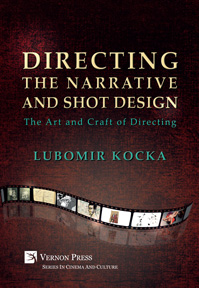
Directing the Narrative and Shot Design
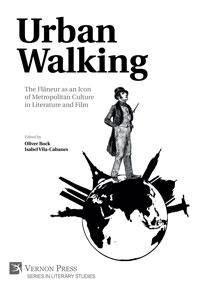
Urban Walking –The Flâneur as an Icon of Metropolitan Culture in Literature and Film
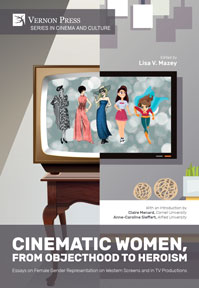
Cinematic Women, From Objecthood to Heroism: Essays on Female Gender Representation on Western Screens and in TV Productions
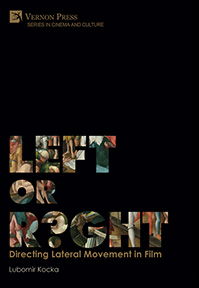
Left or Right? Directing Lateral Movement in Film
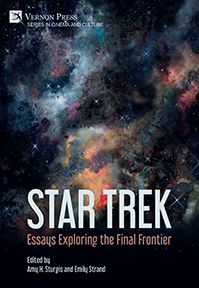
Star Trek: Essays Exploring the Final Frontier
Bibliographic information, number of pages, physical size.
236mm x 160mm
Publication date

To install StudyMoose App tap and then “Add to Home Screen”
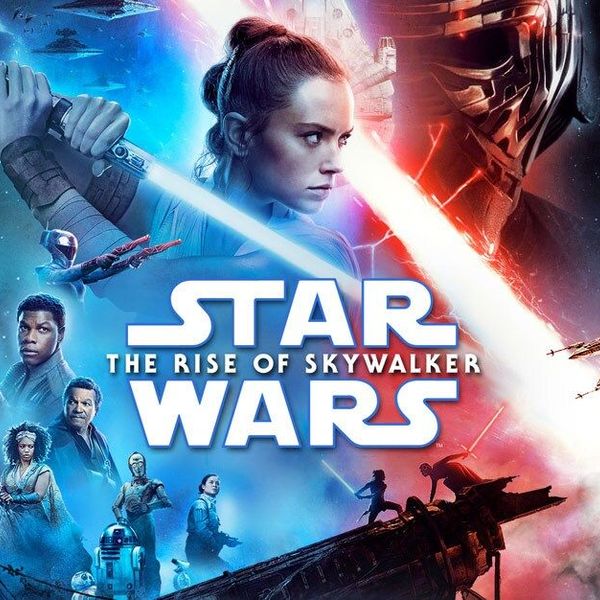
Star Wars - Free Essay Examples and Topic Ideas
Star Wars is an epic space-opera franchise that follows the adventures of a diverse group of characters battling for control of the galaxy. Set in a distant universe, the story revolves around the struggle between the Jedi and the Sith, whose endless battle for power defines the fate of the galaxy. Featuring advanced technology, fantastical creatures, and gripping plotlines, the franchise has captivated audiences for decades with its iconic characters like Luke Skywalker, Darth Vader, Princess Leia, and Han Solo. With its blend of action, adventure, and drama, Star Wars has become a cultural phenomenon that continues to inspire fans around the world.
- 📘 Free essay examples for your ideas about Star Wars
- 🏆 Best Essay Topics on Star Wars
- ⚡ Simple & Star Wars Easy Topics
- 🎓 Good Research Topics about Star Wars
- ❓ Questions and Answers
Essay examples
Essay topic.
Save to my list
Remove from my list
- How does Spielberg use a variety of cinematic techniques in “Jaws” to engage the audience?
- The Genesis of Star Wars
- Three-Act Structure Storytelling in Cinema
- An Analysis of Identity in Half-life and Star Wars: The Force Awakens
- Star Wars: a New Hope Character Analysis
- Favorite Genre of movies
- Director Explains that Ending The Jedi Wasn’t an Option
- Star Wars: the Force Awakens Review
- The Issues of The Trash Compactor in The Movie Series Star Wars
- Blade Runner has been called a “Super Genre” film
- The Stages of the Hero’s Journey
- Conflict of Light Vs Dark in Star Wars
- Star Wars between Misogyny and Radical Feminism
- Difference between diegetic and non-diegetic sound
- Thor The Marvel’s Hero and Archetypal Breadwinner
- Star Wars: a New Peace
- Business Strategy of The Lego Group
- Failure of Star Wars the Last Jedi Franchise
- May the Force be With You, a Movie Review of Star Wars Episode One
- The Movie “Lone Star”
- Become a child star
- Essay Malgorzata Muserovich – star
- What a Star – What a Jerk?
- Become a Child Star? It Is Imperfect!
- Star Apple (Chrysophyllum cainito) as an Antiseptic Mouthwash
- Top Star Bakery Case Analysis
FAQ about Star Wars
👋 Hi! I’m your smart assistant Amy!
Don’t know where to start? Type your requirements and I’ll connect you to an academic expert within 3 minutes.
- Entertainment
- Environment
- Information Science and Technology
- Social Issues
Home Essay Samples Entertainment
Essay Samples on Star Wars
Development and progression of science fiction in cinema.
“Space: the final frontier,” says Spock, as the starship Enterprise embarks upon a five-year mission, “to explore strange new worlds, to seek out new life and new civilizations, to boldly go where no man has gone before.” In many ways, this quote from Star Trek:...
- Science Fiction
George Lucas's Cinematic Style In His Movies "American Graffiti" And "Star Wars"
“Given the importance of the director’s role in the making of a movie and how easily identifiable certain cinematic styles can be throughout the work of some directors, it is often convenient to discuss a film as though the director were the sole creator, like...
- Film Editing
Intellectual Property Protection Of Walt Disney Company Creations
What is Intellectual Property In laymen’s language intellectual property refers to creations of the mind such as : inventions; literary and artistic works; and symbols, names and images used in commerce. Intellectual property is a term that describes any intangible asset. Something proprietary that is...
- Walt Disney
Application of the Auteur Theory to the Movies "Star Wars" and "American Graffiti"
When applied to film directing, auteur theory posits that the director is indeed the author of the film, imprinting it with her or his personal vision. This can be an excellent starting point for analyzing certain films, both thematically and stylistically, and is in fact...
Social Impact of the Star Wars Franchise
The first original Star Wars movie was a low budget science-fiction film that went on became a blockbuster hit, and the box office sales went through the roof. The movie has been extremely popular amongst many cultures, ages and genders over many decades. Star Wars...
Stressed out with your paper?
Consider using writing assistance:
- 100% unique papers
- 3 hrs deadline option
Star Wars: A Political Reflection
Some believe that art imitates life while others may believe that life imitates art. In the world of movies, it's mostly art imitating life. I am drawing similarities between the masterpiece Star Wars and the world history, Undoubtedly the movie had characters like Jedi, Sith...
- World History
Luke Skywalker – A Hero From The Star Wars
When you first meet Luke Skywalker you do not see the fortune that lies within him. Of course children/teens of my generation already know who Luke Skywalker is. Being a millennial sets us aside from the generations before us that met Luke Skywalker on May...
Best topics on Star Wars
1. Development And Progression Of Science Fiction In Cinema
2. George Lucas’s Cinematic Style In His Movies “American Graffiti” And “Star Wars”
3. Intellectual Property Protection Of Walt Disney Company Creations
4. Application of the Auteur Theory to the Movies “Star Wars” and “American Graffiti”
5. Social Impact of the Star Wars Franchise
6. Star Wars: A Political Reflection
7. Luke Skywalker – A Hero From The Star Wars
- Film Analysis
- Hidden Figures
- Smoke Signals
- Movie Review
- A Clockwork Orange
- 13th Documentary
- A Civil Action
Need writing help?
You can always rely on us no matter what type of paper you need
*No hidden charges
100% Unique Essays
Absolutely Confidential
Money Back Guarantee
By clicking “Send Essay”, you agree to our Terms of service and Privacy statement. We will occasionally send you account related emails
You can also get a UNIQUE essay on this or any other topic
Thank you! We’ll contact you as soon as possible.
- Close Menu X

Please note: we are aware of some payment processing issues with USA based orders, we are currently working to resolve this - sorry for any inconvenience caused!

- Publish With Us
- Meet our Editorial Advisors
"[Agriculture, Climate Change and Food Security in the 21st Century: Our Daily Bread] is a thought-provoking and bold argument about how to change the world's food system, from someone worth listening to."
- Professor David Lobell, Stanford University, USA
Postcolonial Star Wars: Essays on Empire and Rebellion in a Galaxy Far, Far Away
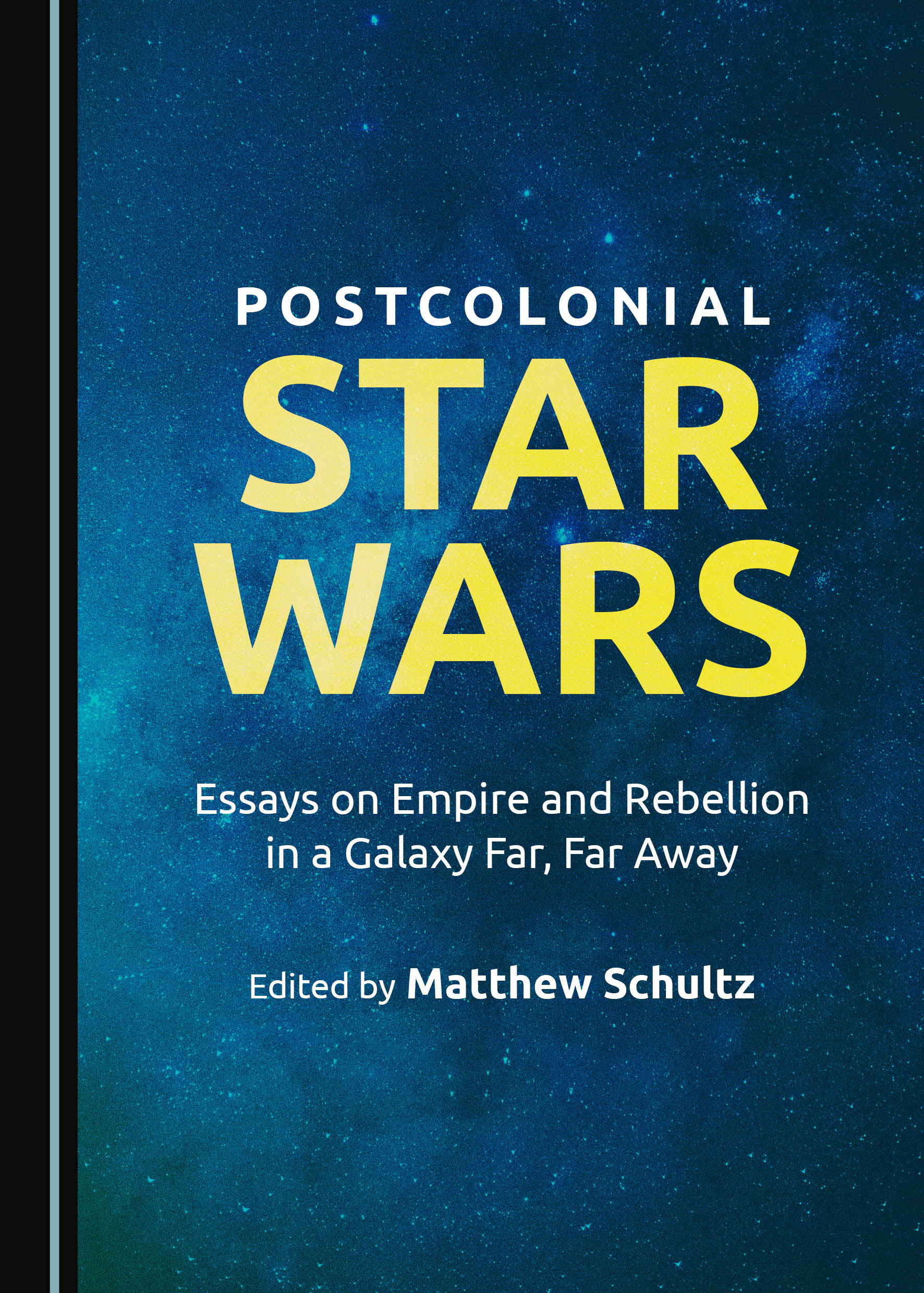
- Description
This collection of twenty short essays draws upon postcolonial theories established by Edward Said, Frantz Fanon, and Albert Camus to help readers better understand the power structures in Star Wars. Divided into five sections––Rebellion, Racism, Feminism, The Subaltern, and The Gothic––the text considers the narrative and technical aspects of various Star Wars films, animated television series, comics, and short stories. While this collection will be of interest to any Star Wars fan wishing to deepen their knowledge of the literature, history, and politics that influenced the creators of the galaxy far, far away, it will also be compelling reading for undergraduates enrolled in first-year writing courses and those taking seminars on science fiction, postcolonial literature, or media studies.
Matthew Schultz, PhD, is the Writing Center Director at Vassar College, USA. He earned his BA and MA in English Literature from John Carroll University, USA, and his PhD in English Literature from Saint Louis University in 2010. He is the author of over two dozen articles appearing in journals such as Irish Studies Review, James Joyce Quarterly, and Postcolonial Text. He has also written four books, including Haunted Historiographies: The Rhetoric of Ideology in Postcolonial Irish Fiction (2014) and Joycean Arcana: Ulysses and the Tarot de Marseille (2020).
There are currently no reviews for this title. Please do revisit this page again to see if some have been added.
Buy This Book

ISBN: 1-5275-5030-3
ISBN13: 978-1-5275-5030-8
Release Date: 26th May 2020
Price: £58.99
New and Forthcoming

- Sales Agents
- Unsubscribe
Cambridge Scholars Publishing | Registration Number: 04333775
Please note that Cambridge Scholars Publishing Limited is not affiliated to or associated with Cambridge University Press or the University of Cambridge
Copyright © 2024 Cambridge Scholars Publishing. All rights reserved.

Designed and Built by Prime Creative
Please fill in the short form below for any enquiries.
Sign up for our newsletter
Please enter your email address below;
by George Lucas
Star wars essay questions.
What is the Force?
The Force, as Obi-Wan Kenobi describes it, is "an energy field created by all living things. It surrounds us and penetrates us. It binds the galaxy together," and it is what gives a Jedi his power. In this way, the Force resembles the life force that many religions allude to, and is reminiscent of the concept of qi , a central concept in Chinese medicine and martial arts. The Force is a metaphysical power stronger than logic can explain.
What is Han Solo's narrative journey in the film?
When Luke and Obi-Wan first meet Han Solo in Mos Eisley, he is a boastful and irreverent smuggler who doesn't look out for anybody besides himself. He has debts to settle with Jabba the Hutt from a narcotics deal that went awry, and he has no interest in thinking about the Force or working for the Rebellion. He sees Obi-Wan and Luke as annoyances more than allies. However, by the end of the film, he begins to develop a conscience and comes to Luke's rescue during the destruction of the Death Star. By the end of the film, Han Solo proves that he does have a sense of right and wrong, and wants to fight on the side of good.
What allows Luke to destroy the Death Star?
A number of elements come into play when Luke is on the rebel mission to destroy the Death Star. For one thing, he is an excellent pilot and has good aim. Secondly, Han Solo comes back to help him in the Millennium Falcon at a key moment. Thirdly, the spirit of Obi-Wan Kenobi speaks to him while he's flying and reminds him to "use the Force." Before he dies, Obi-Wan warns Darth Vader that if he strikes him down he will only become more powerful. This proves true, as after he dies, Obi-Wan becomes a ubiquitous force in Luke's life and reminds him of his powers as a Jedi.
How are Han Solo and Princess Leia similar?
Both Han Solo and Princess Leia have a certain witty and sardonic attitude about conflict. While Leia is much more politically engaged, working for the Rebellion, and Han Solo is more self-serving, they both have a desire to call the shots and a certain bravery and grit when it comes to facing conflict. They spar throughout much of their acquaintance, but they are also drawn to one another, seeing in the other a kindred smartass.
What is Luke's conflict with his uncle, Owen?
While Luke's uncle, Owen, wants Luke to stay on Tatooine and help him with farming, Luke desperately wants to go to school to become a pilot, and has his sights set on bigger and better things than simply staying on the farm. Perhaps it is because Owen sees something of Luke's father, a Jedi knight, in Luke that he is so protective of the young boy. However, his conservative attitude only makes Luke want to set out on his own more.

Star Wars Questions and Answers
The Question and Answer section for Star Wars is a great resource to ask questions, find answers, and discuss the novel.
What are the little droids’ names?
R2-D2 and BB-8
where did bounty hunters operate most during the galactic empire?
The bounty hunters did not operate in one single place per say but operated out of many little clusters. One of the most popular is the Hutt's homeworld and other outer rim worlds.
Does Ezra go to the dark side
Ezra was tempted by the dark side on several occassions. In the end, he chooses to remain loyal to his master.
Study Guide for Star Wars
Star Wars study guide contains a biography of George Lucas, literature essays, quiz questions, major themes, characters, and a full summary and analysis.
- About Star Wars
- Star Wars Summary
- Character List
- Director's Influence
Essays for Star Wars
Star Wars essays are academic essays for citation. These papers were written primarily by students and provide critical analysis of Star Wars by George Lucas.
- What Does Star Wars Have Now it Did Not Have When First Released?
Wikipedia Entries for Star Wars
- Introduction
Home — Essay Samples — Entertainment — Star Wars — Analysis Of Jedi From The Star Wars

Analysis of Jedi from The Star Wars
- Categories: Film Analysis Star Wars
About this sample

Words: 529 |
Published: Mar 18, 2021
Words: 529 | Page: 1 | 3 min read
Table of contents
Introduction.

Cite this Essay
To export a reference to this article please select a referencing style below:
Let us write you an essay from scratch
- 450+ experts on 30 subjects ready to help
- Custom essay delivered in as few as 3 hours
Get high-quality help

Dr. Karlyna PhD
Verified writer
- Expert in: Entertainment

+ 120 experts online
By clicking “Check Writers’ Offers”, you agree to our terms of service and privacy policy . We’ll occasionally send you promo and account related email
No need to pay just yet!
Related Essays
3 pages / 1310 words
3 pages / 1448 words
3 pages / 1359 words
2 pages / 925 words
Remember! This is just a sample.
You can get your custom paper by one of our expert writers.
121 writers online
Still can’t find what you need?
Browse our vast selection of original essay samples, each expertly formatted and styled
Related Essays on Star Wars
It is the textual integrity of Orson Welles’ film Citizen Kane (1941) which enables it to effectively demonstrate the need for healthy relationships and the dangers of the exclusive pursuit of power. The film’s non-linear [...]
In the famously popular novel Alice in Wonderland, Lewis Carroll expresses themes of chaos, fantasy, and violence, all of which raise important questions throughout the novel. However, in the many film adaptations of the story, [...]
Set in a dystopian Los Angeles of 2019, Blade Runner follows Rick Deckard (Harrison Ford), an ex-policeman brought out of retirement to eliminate a group of renegade replicants who have illegally arrived on Earth. During [...]
George Orwell’s ‘Animal Farm’ is an allegorical fairy tale which is profound in its condemnations of totalitarian regimes. The novel explores the concepts of propaganda, totalitarianism and tyranny impacting on the oppressed [...]
Casablanca, directed by Michael Curtiz and released in 1942, exhibits qualities of both the Classical Hollywood Narrative and Art Cinema. These two film structures are the equivalent to formalism in literature, but also point to [...]
Rick, a kindhearted man with a strong moral compass, is far from the most detestable of the characters in Casablanca. While he demonstrates some qualities and actions that could lead to the assumption that he is loathsome, he is [...]
Related Topics
By clicking “Send”, you agree to our Terms of service and Privacy statement . We will occasionally send you account related emails.
Where do you want us to send this sample?
By clicking “Continue”, you agree to our terms of service and privacy policy.
Be careful. This essay is not unique
This essay was donated by a student and is likely to have been used and submitted before
Download this Sample
Free samples may contain mistakes and not unique parts
Sorry, we could not paraphrase this essay. Our professional writers can rewrite it and get you a unique paper.
Please check your inbox.
We can write you a custom essay that will follow your exact instructions and meet the deadlines. Let's fix your grades together!
Get Your Personalized Essay in 3 Hours or Less!
We use cookies to personalyze your web-site experience. By continuing we’ll assume you board with our cookie policy .
- Instructions Followed To The Letter
- Deadlines Met At Every Stage
- Unique And Plagiarism Free
Wookieepedia
Star Wars Outlaws has released and spoilers from it will begin to appear on the wiki per our Spoilers policy. If making any edits concerning the game please be sure to add Template:Spoiler to the top of the page to warn others.
To remove ads, create an account . Join Wookieepedia today!
- Edit source
Form I , also known as Shii-Cho , The Way of the Sarlacc , or The Determination Form , was the first of the seven forms of lightsaber combat . This combat form was developed during the transitional period within the Jedi Order from ancient metal swords to more contemporary lightsabers. Shii-Cho was intended to cater to these new weapons, establishing the basic motions and target zones utilized with a lightsaber. As Shii-Cho was effectively an experimental combat form, and was created prior to the emergence of Dark Jedi and Sith Lords, it did not address the issue of lightsaber-to-lightsaber combat, and was quickly replaced by Form II . Despite this, Shii-Cho continued to find a niche as a training form, with almost every Jedi duelist receiving some instruction in it, and including elements in their own combat styles. Shii-Cho was considered an effective fall-back option when no other form or combat style would do.
In combat, Form I lightsaber combat was wild and raw, relying on deliberate tactics and being primarily aimed towards disarming rather than injuring foes, in keeping with Jedi philosophy. Basic initiates in the style demonstrated rather clumsy performance, though in the hands of a master, Shii-Cho was fluid but highly randomized and unpredictable.
- 2.1 Training and practice
- 2.2 Known moves and maneuvers
- 2.3 Applications
- 3 Notable practitioners
- 4 Behind the scenes
- 5 Appearances
- 7 Notes and references
History [ ]
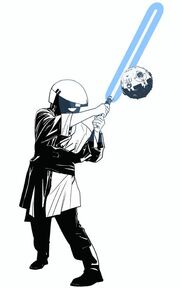
Historically, Shii-Cho was often applied as a tutorial form.
Original lightsabers were unstable and cumbersome weapons, used merely for ceremonial purposes, and requiring no specialized fighting methods for such usage. However, as lightsaber technology developed and they became usable in combat, a combat form tailored to make use of the advantages offered by lightsabers and compensate for their weaknesses became needed. Thus, the first form of lightsaber combat was developed. [5]
As the most ancient style of lightsaber combat, Shii-Cho was developed during the transition period from swords to lightsabers. Lightsabers were wielded in a manner similar to swords, so many of the maneuvers, such as attacks or parries, remained unchanged, as the key principles of the old sword-fighting methods continued to be incorporated. The simplicity and persistent methods of the form led it to being dubbed the "Way of the Sarlacc" and the "Determination Form". [5]
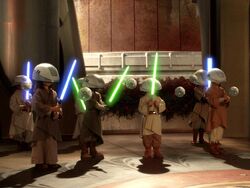
Jedi Initiates underwent early lightsaber training in Shii-Cho
As Shii-Cho was developed prior to either the emergence of Dark Jedi or Sith Lords, it was not created with lightsaber-to-lightsaber combat in mind. Despite this, it was the preferred form of such groups when they began appearing, as it was quite simply the only option. As lightsaber duels between practitioners of the Force became increasingly common, Form I was judged as being inadequate for the task, leading to the development of the second form of lightsaber combat, also known as Makashi . [5]
Despite the development of a combat form tailored to lightsaber dueling, Shii-Cho was not rendered obsolete. Its simplicity and basic focuses left the form ideally suited for basic training, and it was used to provide initiates with an early introduction to lightsaber combat. Shii-Cho remained an effective form of combat for thousands of years, its simplicity making it a good fallback option when no other form would do. [2] However, a true master of the form could use it in both lightsaber combat and battlefield situations to great effect, as demonstrated by Kit Fisto on numerous occasions.
Description [ ]
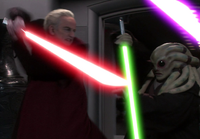
Kit Fisto uses Shii-Cho against Darth Sidious .
As Shii-Cho was an extension of traditional sword-fighting styles, it retained the basics of attacks, parries, and body zones established by such ancient methods. [5] Shii-Cho fostered an emotionally-heated mindset, which resulted in the considerable temptation to execute combat with lethal intent, requiring great restraint to exercise the form without going too far. Despite the pull to kill, the style was designed for the purpose of disarming without seriously injuring. [6] [7]
Shii-Cho swordplay was simplistic and raw. In the hands of a master, the bladework was described as "like watching water flow over the falls." [8] However, less adept practitioners displayed much more basic and somewhat clumsy performance. In combat, Form I encouraged deliberate tactics, calling for continuous, step-by-step advancement while cutting off the opponent's angles. [9]
Shii-Cho was specialized towards engaging multiple opponents, the wide, sweeping motions being ideally suited towards attacking numerous adversaries. However, Form I was not as useful against single opponents, as such enemies had complete mobility and could find a weakness in Shii-Cho's comparatively clumsy bladework. [2]
Training and practice [ ]
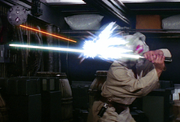
Luke Skywalker engaging in early Shii-Cho blast-deflect training with a remote
As the most simplistic form, Shii-Cho was the first form taught to initiates within the Jedi Order. Form I training provided the basic knowledge of the sword-fighting principles and blast-deflection skill that was required for practice of all the other forms. [7]
In order to teach students to draw upon the Force rather than rely on their senses, early level Shii-Cho blast-deflect training was conducted with a blindfold, forcing the initiate to rely upon their instincts. [10] Later training was conducted through the use of sequences and velocities , the continuous repetition making the moves instinctive reflexes. These training regimens were carried over to all following lightsaber combat forms, which used similar methods. [7] [3]
Known moves and maneuvers [ ]
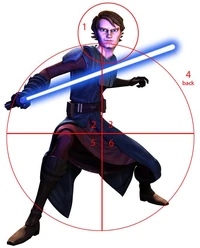
Shii-Cho body target zones
The basic rules of attacks, parries, and body target zones were established by Shii-Cho combat. Shii-Cho also had two methods of combat which determined how these moves were executed; Ideal-Form and Live Combat Form. [11]
Ideal Form 1 was mainly used in sparring, and all the moves and maneuvers were executed at perfect horizontal/vertical angles, with attacks and parries being perpendicular to one another. The Live Combat Form was much more functional, the attacks being diagonal strikes at each respective body zone, the goal being to increase speed and reduce actual movement. [11]
The body target zones were numbered as follows; 1 - head, 2 - right arm and side, 3 - left arm and side, 4 - back, 5 - right leg, 6 - left leg. [11]
Shii-Cho philosophy emphasized victory without injury and as such, the sun djem mark of contact was traditionally employed by Form I practitioners. Keeping with the use of sun djem , one of the attacks utilized by Form I practitioners was referred to as the "Disarming Slash", consisting of a strike directed at the opponent's weapon in an attempt to rip it out of their grasp. [12] Another of the techniques utilized by Shii-Cho was dubbed the "Sarlacc Sweep", a wide sweeping attack in which the duelist struck against multiple enemies. [12] Other maneuvers included the basic Form I horizontal slash. [13]
Applications [ ]

Lucien Draay demonstrated the "disarming slash" while sparring with Raana Tey and Xamar .
Among the skilled warriors who utilized Shii-Cho in combat were Lucien Draay [14] and Meetra Surik . [2] Draay was trained by the failed Jedi Haazen , who took over due to the neglectful behavior of Lucien's mother, Krynda . Despite Haazen's lack of power or skill, he was able to mold Lucien into a formidable duelist, proven when Lucien took on the four Seers Raana Tey , Feln , Xamar , and Q'Anilia simultaneously in a group sparring match and beat them all. However, Draay was not invincible, as shown during his final confrontation with his former pupil, Zayne Carrick , whom Draay tried to kill after falling under Haazen's influence when the latter's identity as a Sith Acolyte was revealed. Despite Carrick's comparative lack of skill, and his self-described "awkward" relationship with the Force, he was able to match Lucien blow for blow and hold him off. However, Lucien's skill was still enough that Carrick could not defeat him, and Carrick only survived because he managed to convince Lucien to back down. [15]
As for Surik, she received training in Shii-Cho during her time in the Jedi Order. However, after she left the Order in the aftermath of the Mandalorian Wars , she cut herself off from the Force and accordingly "forgot" all her knowledge regarding it, including her skill in Shii-Cho. As she began reawakening to it, she instinctively regained her skills with Form I. Her application of the style was highly versatile, applied with numerous weapons. She used the form in a manner that allowed her to fare well against multiple opponents, but not to detract from her ability to deal with a single adversary. [2]
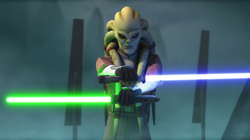
Kit Fisto was capable of applying Shii-Cho to fighting with dual-blades.
A Form I specialist who lived during the Clone Wars was Kit Fisto , who was credited as one of the best duelists in the Jedi Order. His mastery of the form was advanced, and he applied it in many battles and duels, always with his trademark smile. He went head to head with many of the most dangerous adversaries of the Clone Wars and survived. A notable opponent was General Grievous , whom Fisto proved able to hold his own against and nearly defeat, [16] as Form I's specialization against multiple foes [7] was well-suited to holding off the four lightsabers Grievous' bizarre mechanical anatomy allowed him to wield. Fisto's quick thinking and speedy reflexes enabled him to recognize vulnerable body zones on his opponents and react immediately, as shown when he cut off Grievous' legs and later one of his hands during their duels. [16] His versatility with Shii-Cho was such that he could ably apply it towards the usage of dual-blades, or even lightwhips . [6]
However, Kit Fisto was not without his weaknesses. Form I was ideal when heavily outnumbered and effective against many opponents, but a single opponent was able to find flaws in it, and this proved to be Kit Fisto's downfall. [7] Against Asajj Ventress on Ord Cestus , he simply wasn't quick enough with his blade to deal with the Makashi specialist, and Shii-Cho was considered weak against Form II in any case. [6] [7] [17] His final battle against Darth Sidious ended with Fisto's death, as—despite Fisto's own power and skill—he simply wasn't able to compete with Sidious. However, Fisto managed to last longer than his fellow combatants, Agen Kolar and Saesee Tiin , being able to block several of Sidious' vicious blows before falling. [18]
Obi-Wan Kenobi commented Form I was wild, raw, and deadly, requiring much emotional heat, and Kit Fisto noted how hard it was to control the pull of Form I, disabling opponents rather than killing them. [6] However, Kenobi was nevertheless versed to a degree in Shii-Cho, able to infuse elements of the Form into his swordplay, including the rematch with Count Dooku onboard the Invisible Hand . Qui-Gon Jinn, Kenobi's master, also displayed a level of mastery over the form. Dooku himself, who had enough knowledge in Form I to train others on it, described Shii-Cho swordplay as "deliberate as a lumberdroid, moving step by step, cutting off the angles, clumsy but relentlessly dogged." [9]
Notable practitioners [ ]
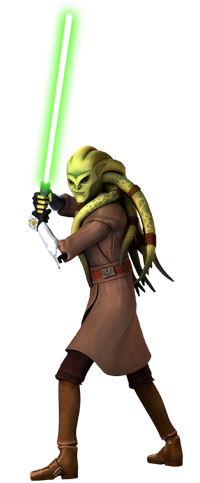
Jedi Master Kit Fisto in the Form I opening stance.
As Shii-Cho had been in existence for millennia, and was used to provide early training in lightsaber combat, almost all lightsaber duelists received some level of training in it and included aspects of the form in their own fighting methods.
Other than Lucien Draay, [14] Meetra Surik, [2] Obi-Wan Kenobi, [9] and Kit Fisto, [6] Shii-Cho had many advanced and/or specialist practitioners. In more recent years, the form was mastered by the Jedi swordmaster Cin Drallig along with the other six forms. Grand Master Yoda and Swordmaster Mace Windu were also proficient in its usage, as they were said to have fully mastered all the seven forms of lightsaber combat. [19] Master Kirlocca of the Almas Academy was also credited as having mastered Form I. [8] Kento Marek was a Shii-Cho practitioner, and his son, Galen Marek , also known as Starkiller, maintained a familiarity with the form, able to recognize it in his opponent's technique. [20]
Dooku himself had sufficient knowledge in Shii-Cho that he personally trained General Grievous and his IG-100 MagnaGuards in the style. [21] Darth Vader incorporated elements of Shii-Cho into his personal variant of Form V , and his son, Luke Skywalker , received instruction in basic Form I velocities during his early training under Obi-Wan Kenobi . [13]
Shii-Cho, like the other six forms, would eventually be rediscovered by the New Jedi Order . [22] [5]
Behind the scenes [ ]
Shii-Cho was first described in the Fightsaber: Jedi Lightsaber Combat article in Star Wars Insider 62 , written by David West Reynolds and fencer Jack "Stelen" Bobo, identified it as Form I lightsaber combat. The proper name of the form, "Shii-Cho", as well as its alternate titles as the "Determination Form" and the "Way of the Sarlacc " would be specified in later sources. [23] [22]
While every Jedi-trained duelist would have received training in Form I, there are few specialist practitioners. However, there are some individuals theorized to be adherents, like Sora Bulq , based on statements in the official Databank, which credits him as a master of all known lightsaber forms, though Shii-Cho isn't explicitly mentioned.
Shii-Cho, along with the other lightsaber forms, appears in Star Wars Galaxies as part of moves and techniques employable by Jedi characters. This has not been clarified to be canonical. [24]
In Star Wars: The Old Republic , Shii-Cho is the form of choice for the Focus specialization available to Jedi Guardians and Jedi Sentinels, as well as the Rage specialization available to Sith Juggernauts and Sith Marauders. Both of those specializations utilize a mix of lightsaber strikes and Force attacks, but are not particularly strong in combat against multiple opponents, despite it being Shii-Cho's primary canonical advantage. The form itself is only a passive ability and does not cause any visual changes in the fighting style.
Appearances [ ]
| : Episode II : Episode III novelization unabridged audiobook novelization — |
Sources [ ]
- Star Wars: Attack of the Clones: The Visual Dictionary
- Hero's Guide
- Star Wars: Knights of the Old Republic II: The Sith Lords : Prima Official Game Guide
- Star Wars: Revenge of the Sith: The Visual Dictionary
- Threats of the Galaxy
- Star Wars Fandex Deluxe Edition
- The Complete Star Wars Encyclopedia
- Star Wars: The Clone Wars Comic 6.5
- The Jedi Path: A Manual for Students of the Force
- Totally 20: The Phantom Menace
- The Essential Guide to Warfare
Notes and references [ ]
- ↑ 2.0 2.1 2.2 2.3 2.4 2.5 2.6 Star Wars: Knights of the Old Republic II: The Sith Lords
- ↑ 3.0 3.1 Darth Bane: Path of Destruction
- ↑ Legacy of the Force: Fury
- ↑ 5.0 5.1 5.2 5.3 5.4 5.5 5.6 5.7 Jedi vs. Sith: The Essential Guide to the Force
- ↑ 6.0 6.1 6.2 6.3 6.4 6.5 The Cestus Deception
- ↑ 9.0 9.1 9.2 Star Wars : Episode III Revenge of the Sith novelization
- ↑ Star Wars : Episode IV A New Hope
- ↑ 11.0 11.1 11.2 Star Wars: Attack of the Clones: The Visual Dictionary
- ↑ 12.0 12.1 Jedi Academy Training Manual
- ↑ 14.0 14.1 Knights of the Old Republic Campaign Guide
- ↑ Star Wars: Knights of the Old Republic (comic series)
- ↑ Star Wars : Episode III Revenge of the Sith
- ↑ The Force Unleashed novelization
- ↑ Labyrinth of Evil
- ↑ 22.0 22.1 The Jedi Path: A Manual for Students of the Force
- ↑ Star Wars: Lightsabers: A Guide to Weapons of the Force

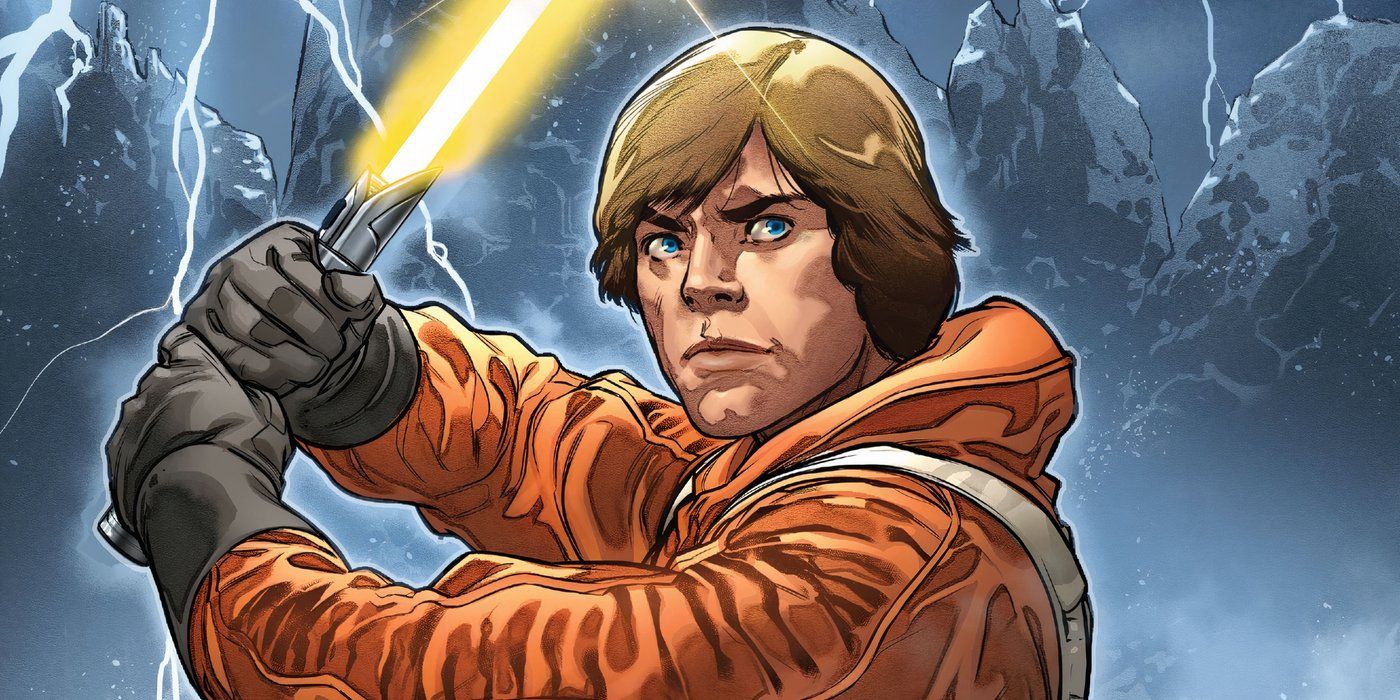
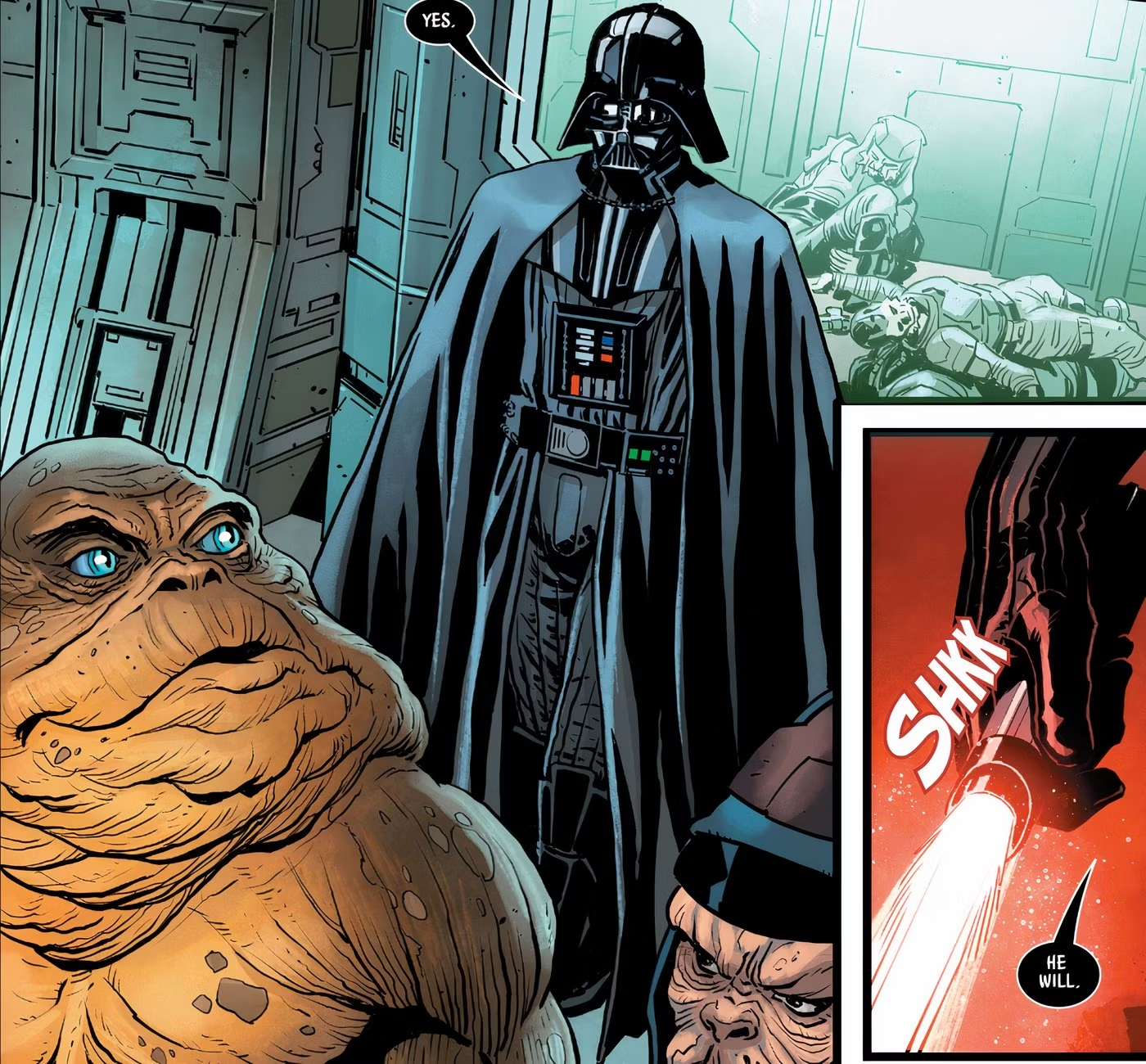
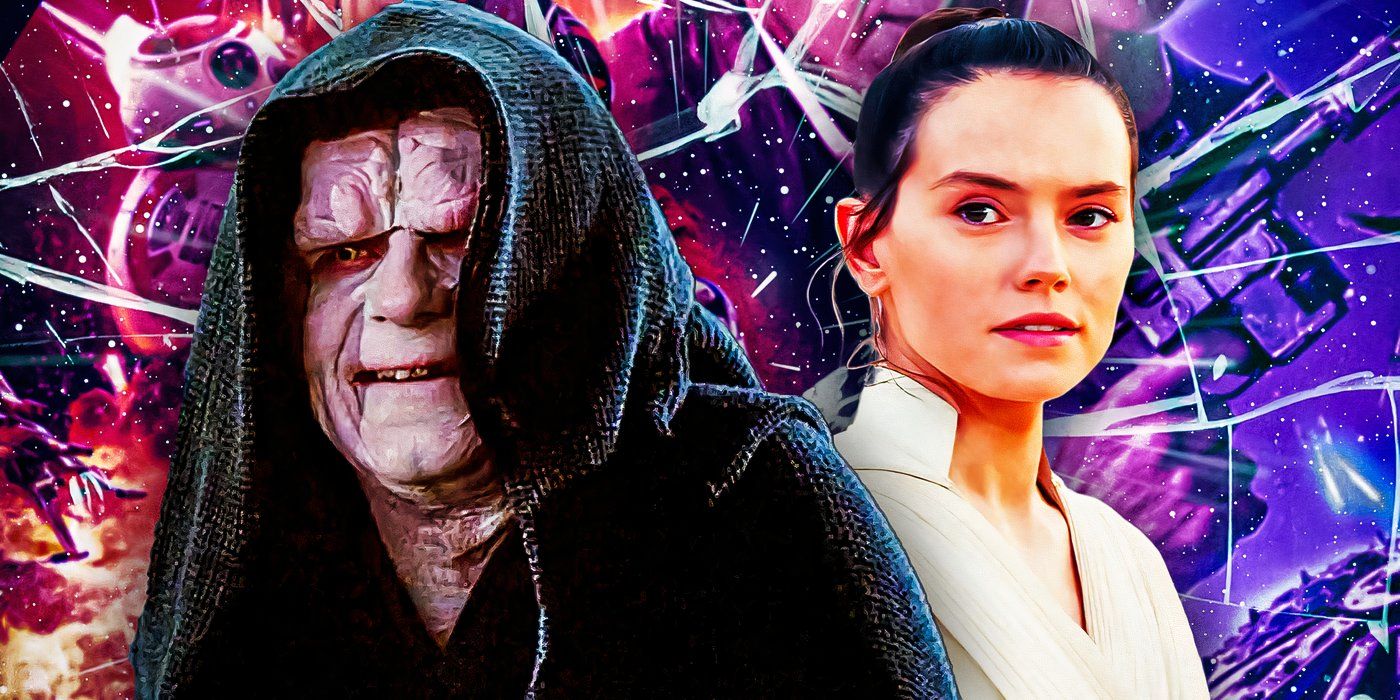
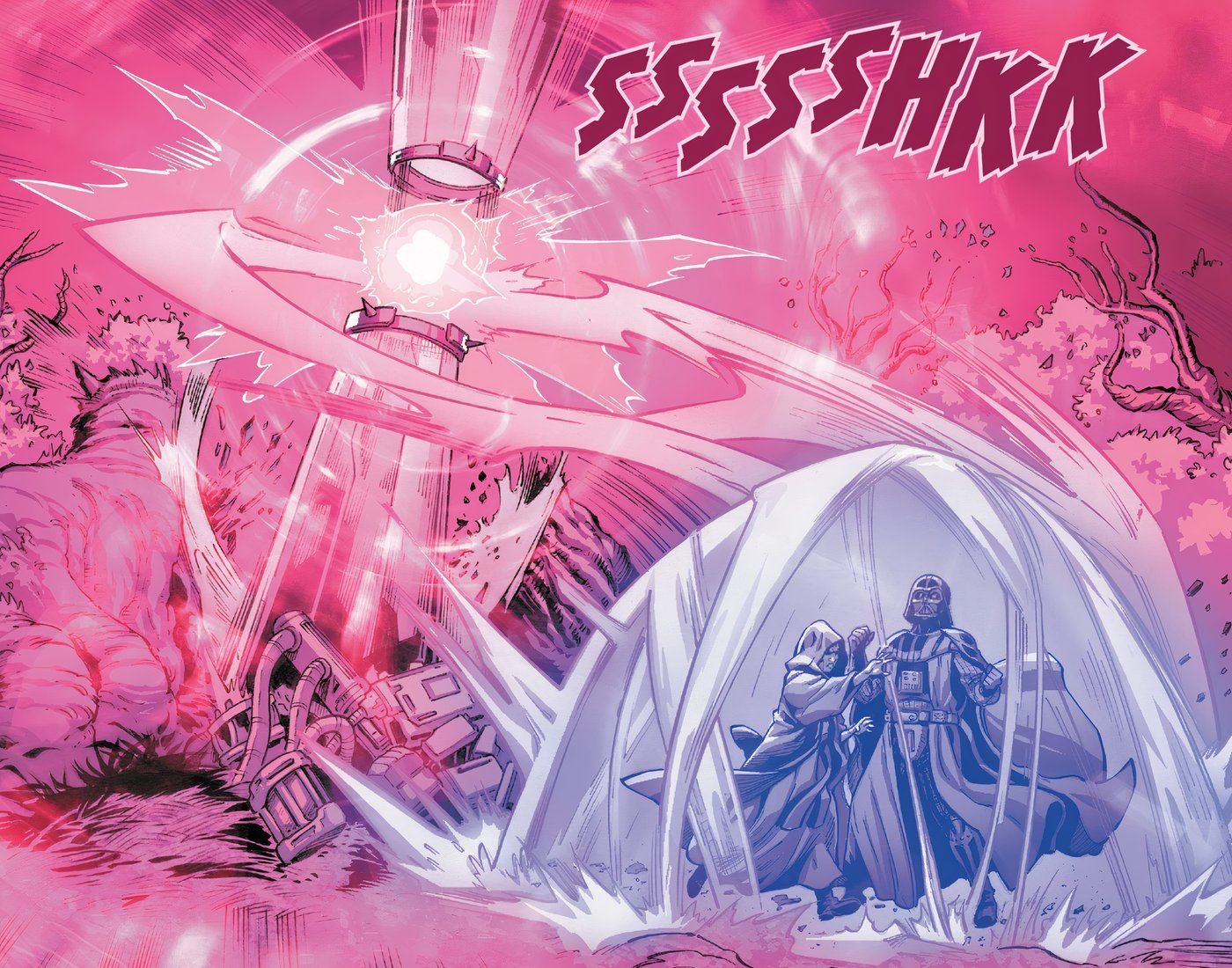
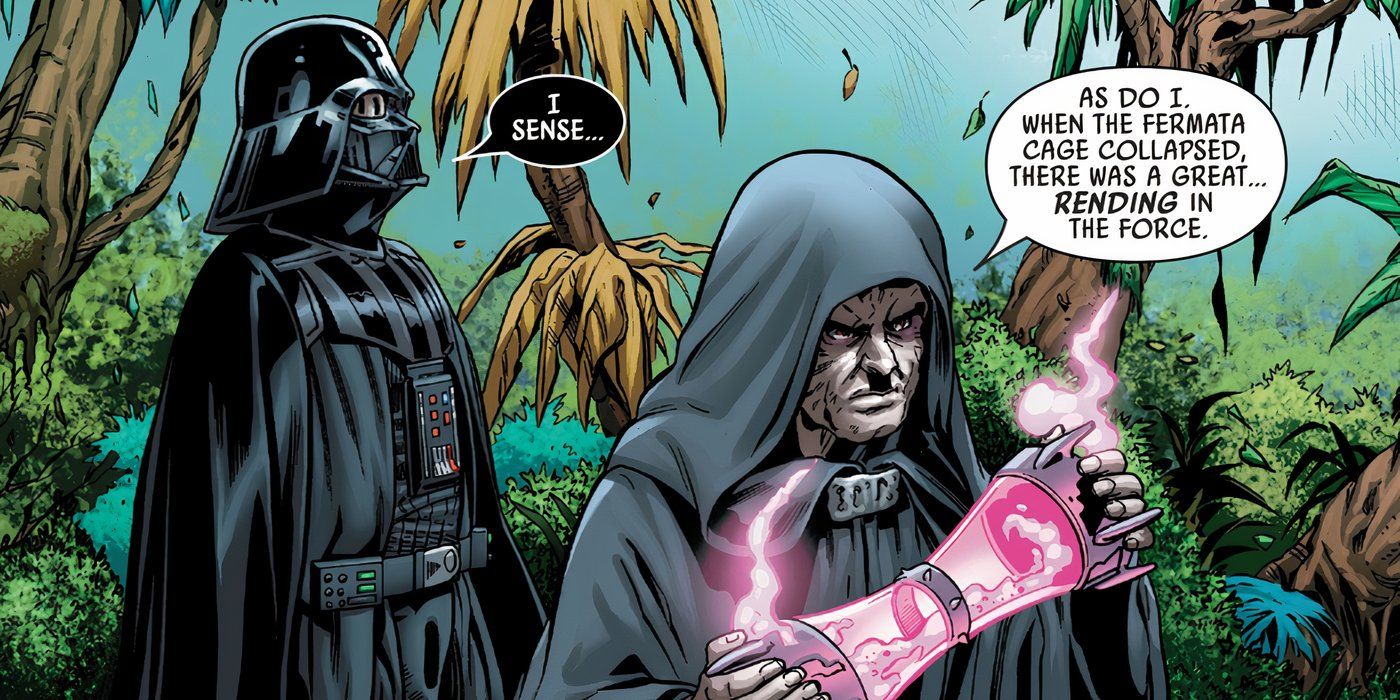
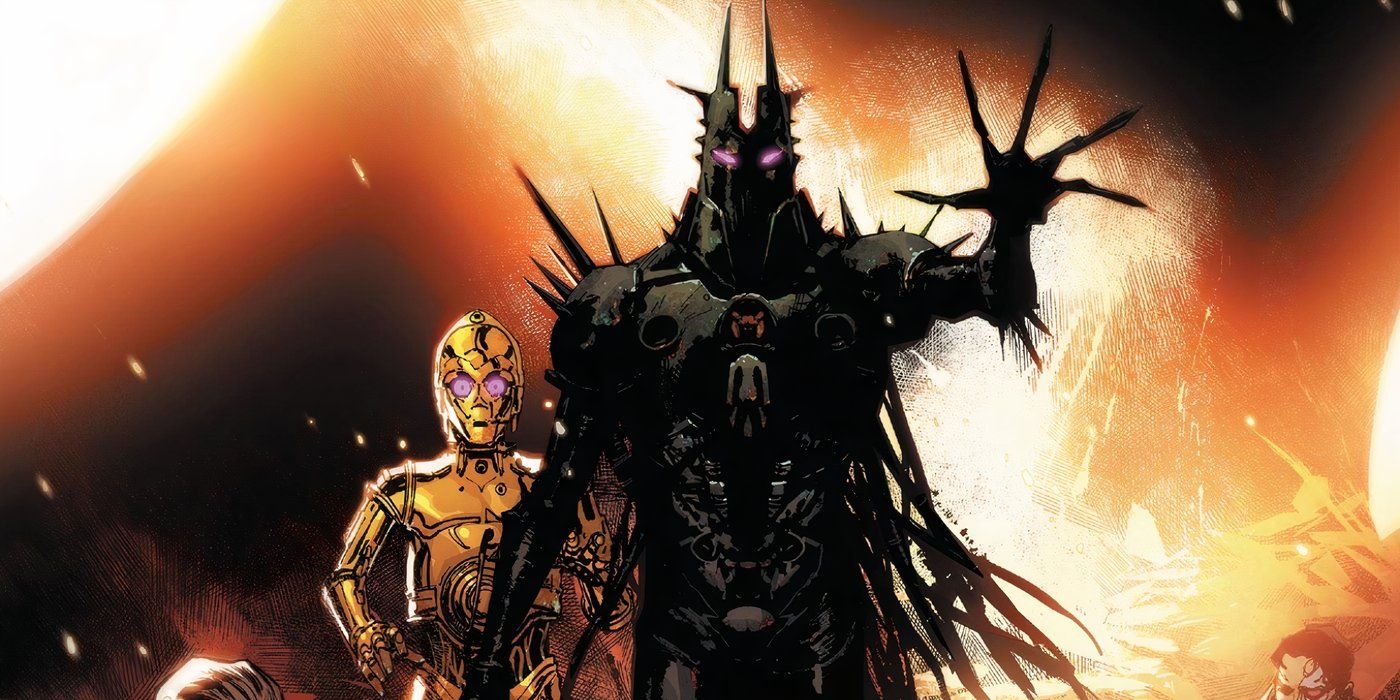
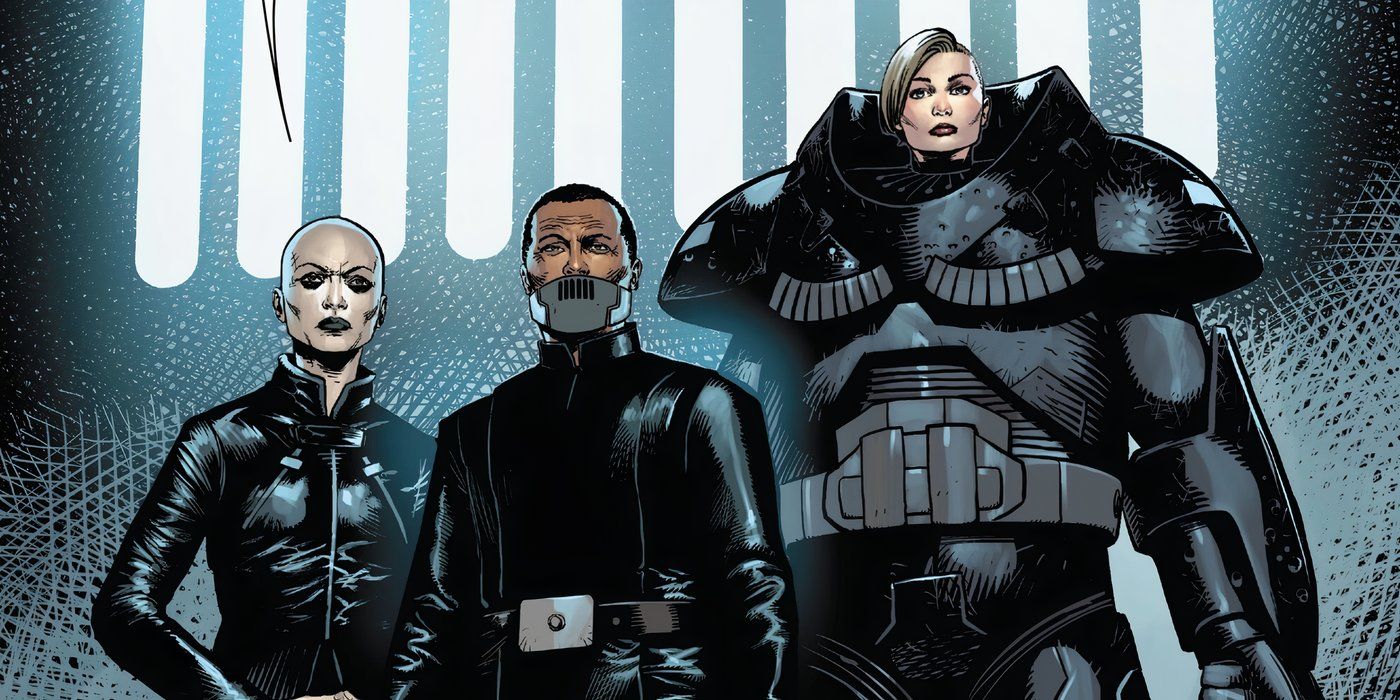
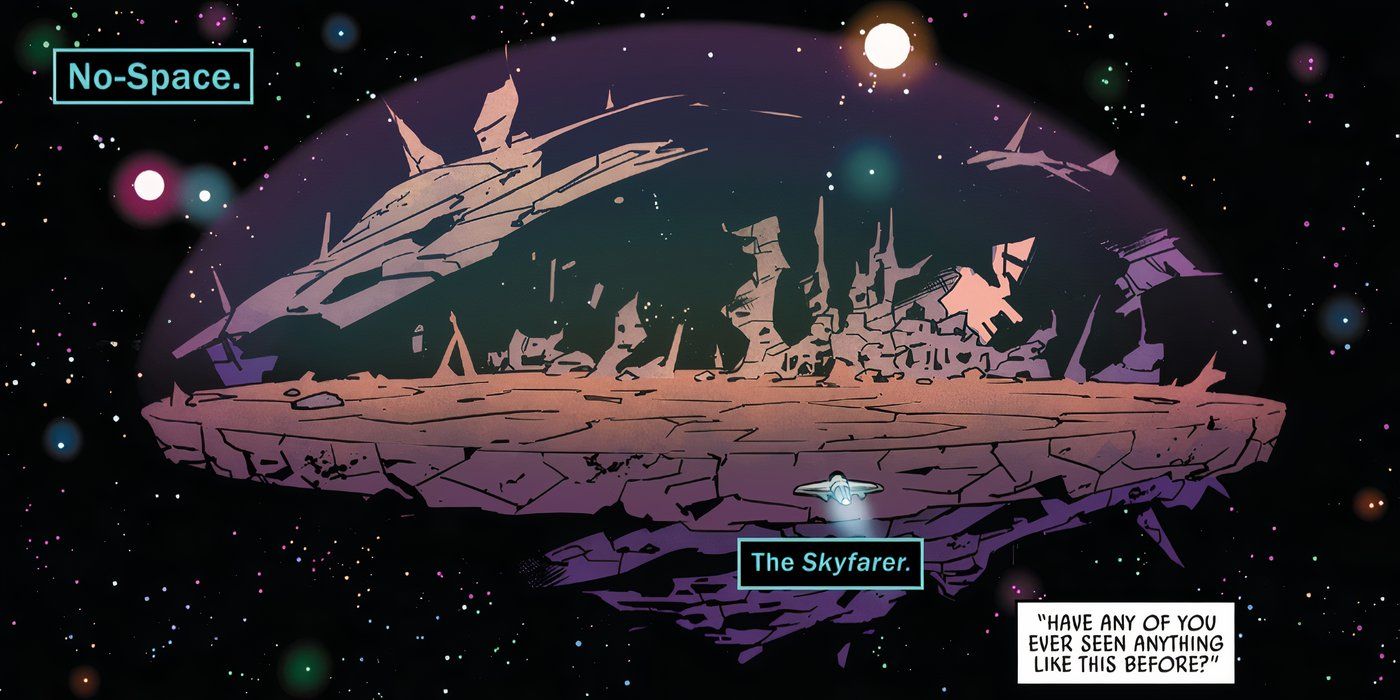
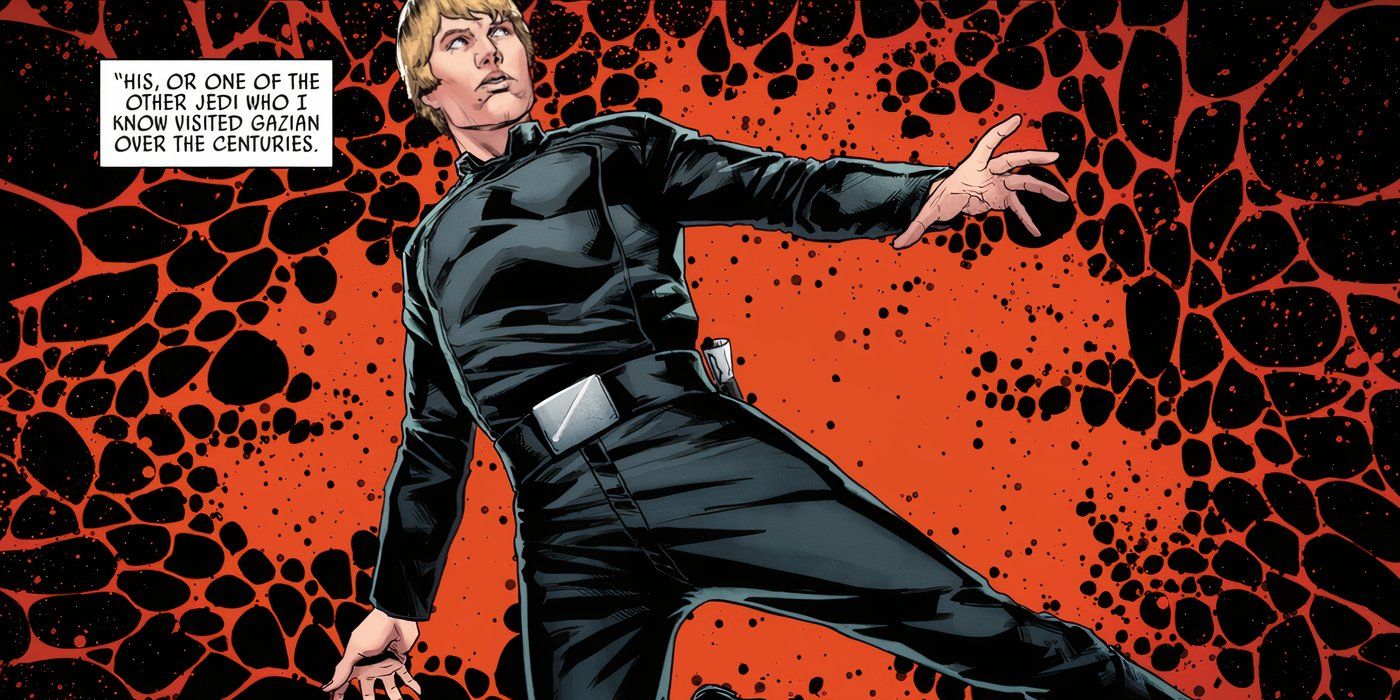
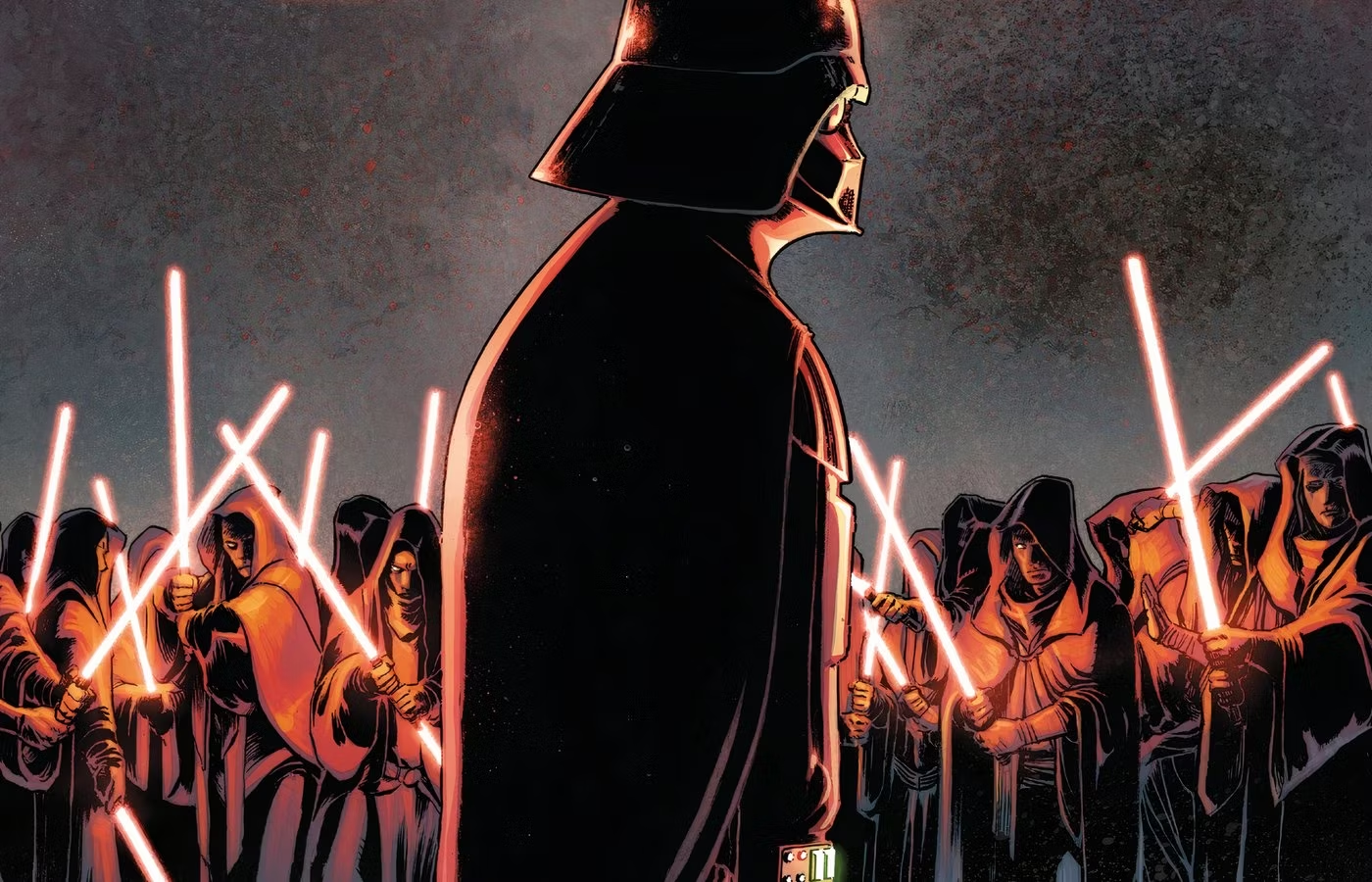
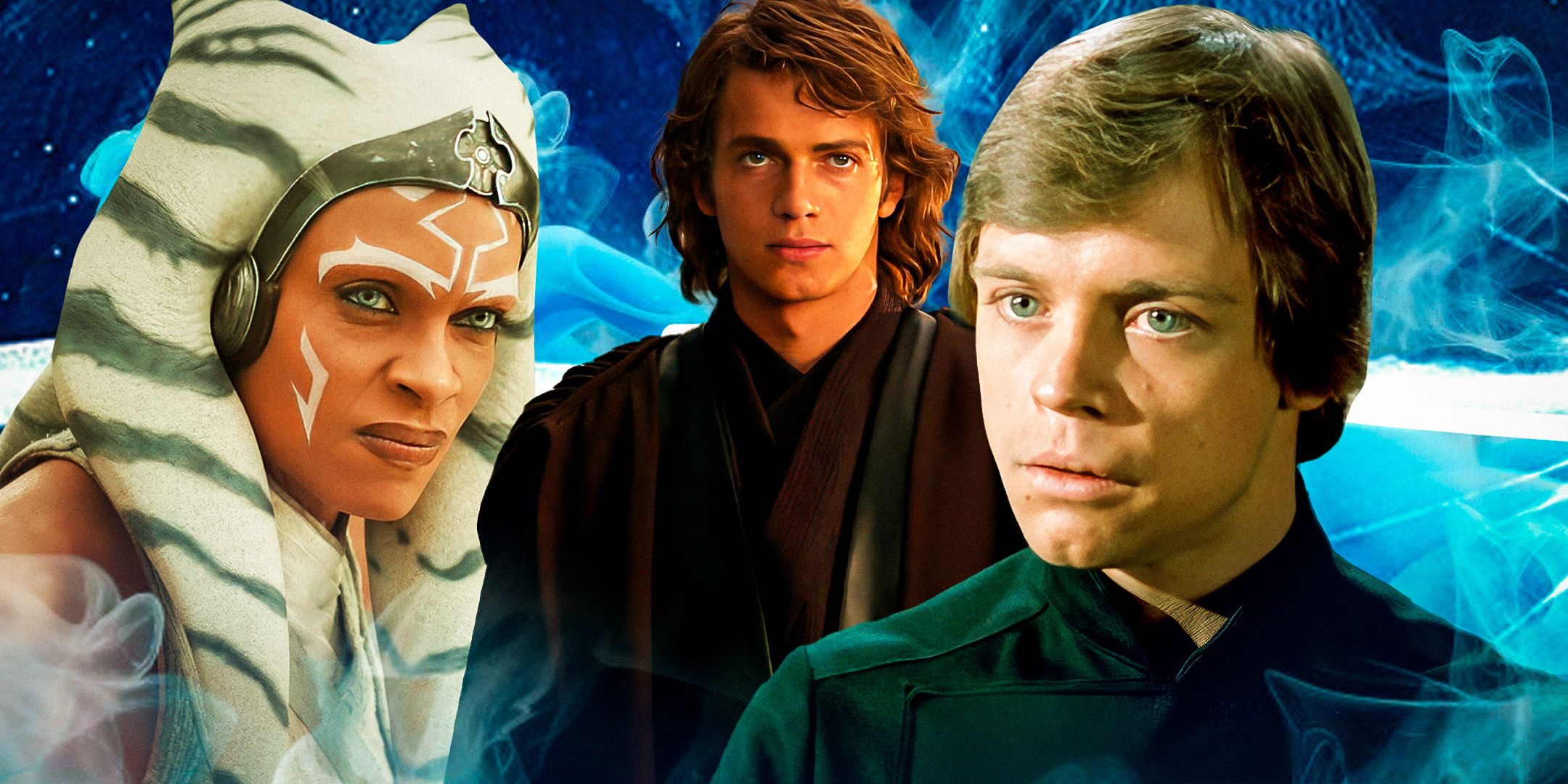
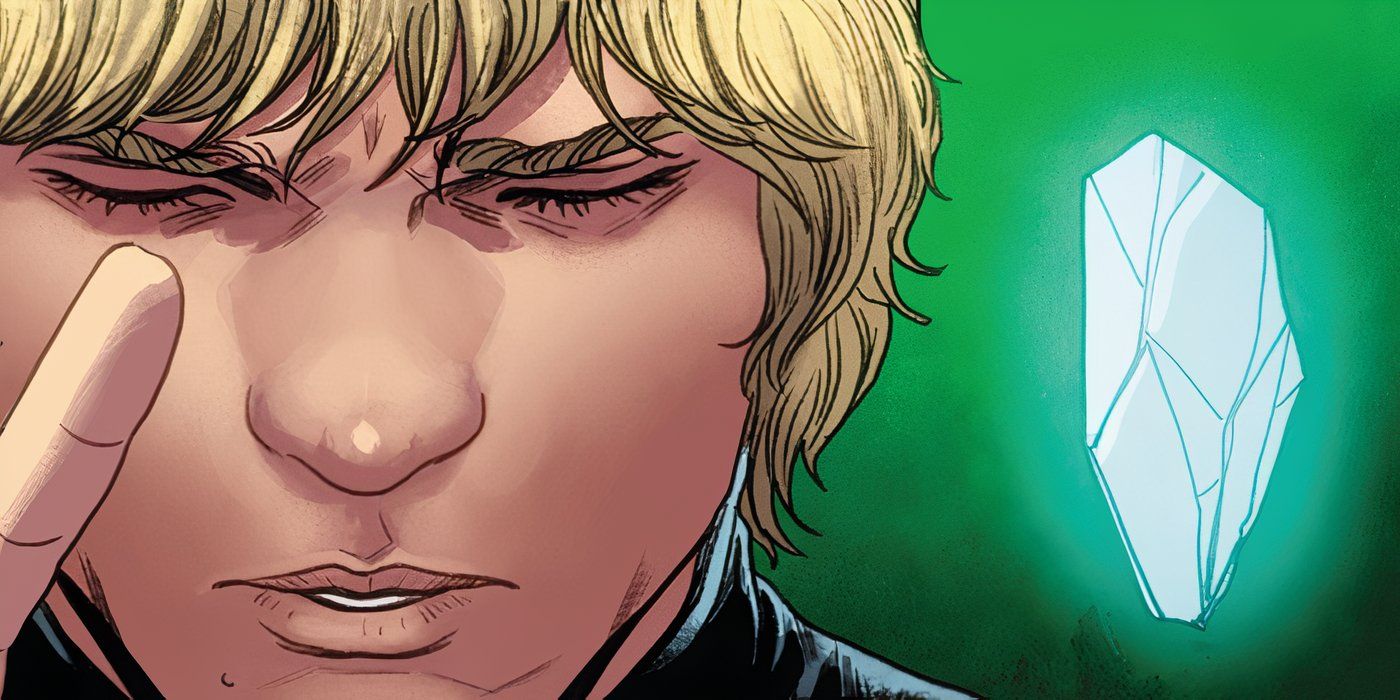
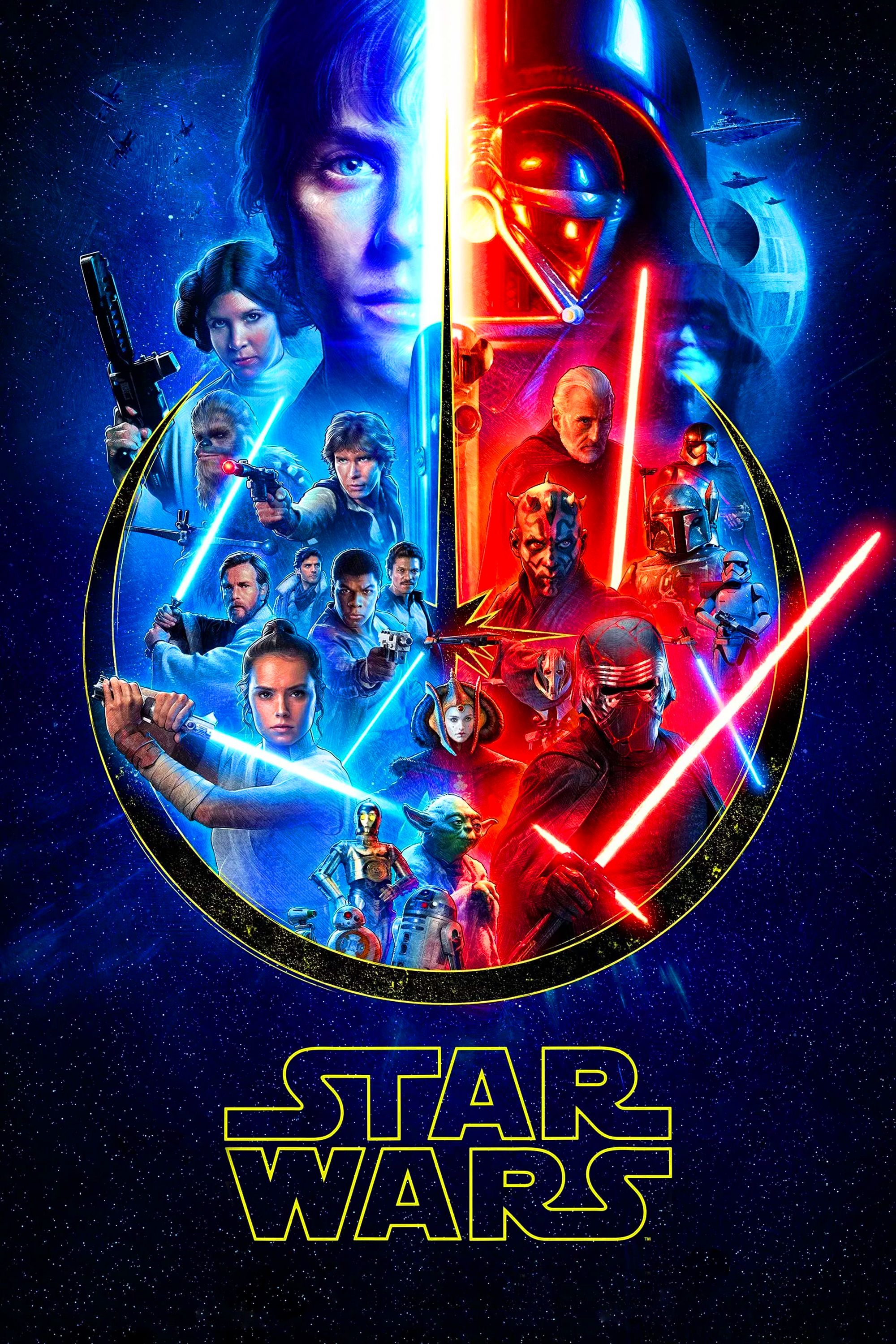


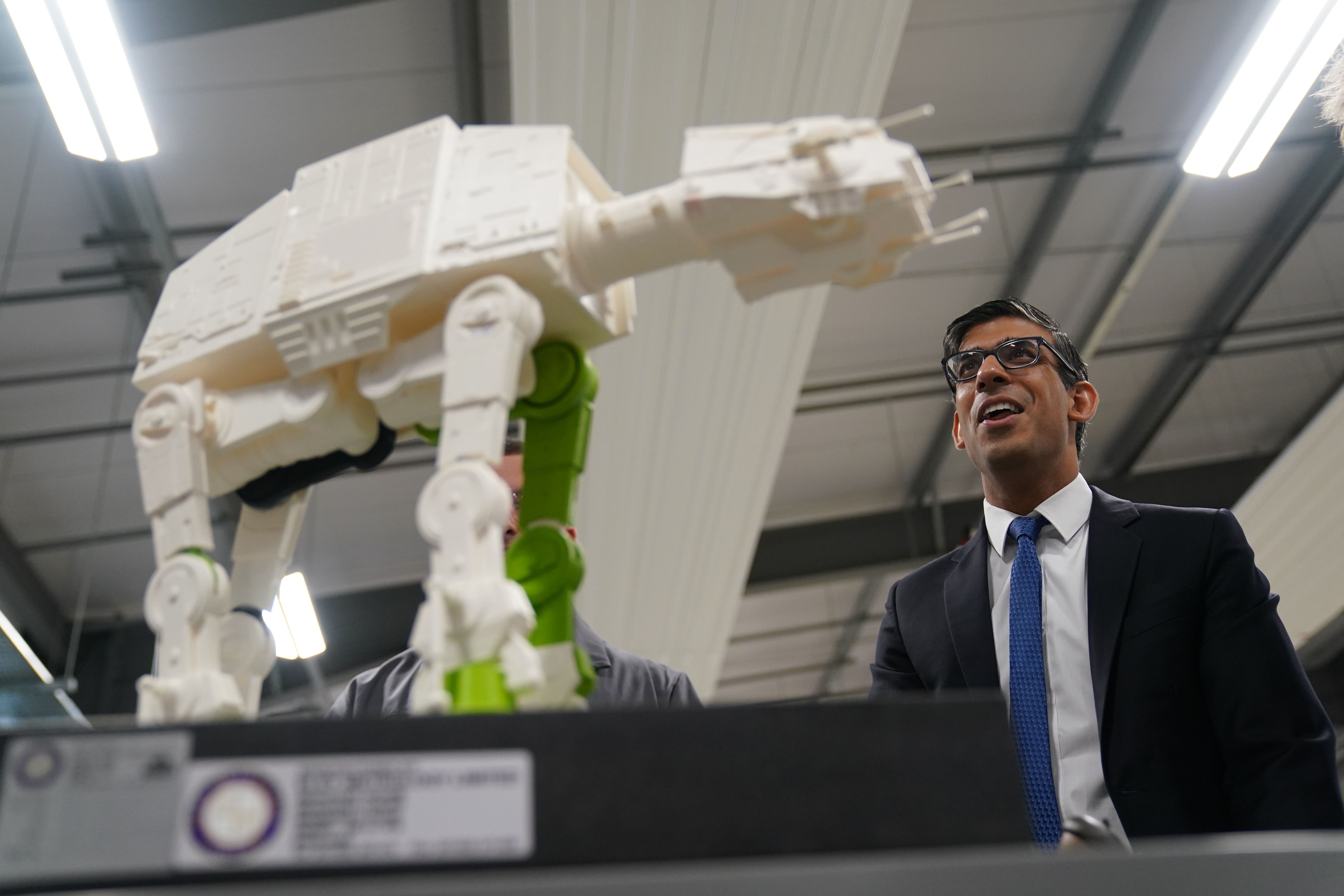




IMAGES
VIDEO
COMMENTS
Star Wars Summary and Analysis of Part 1. Summary. A title card reads, "A long time ago in a galaxy far, far away...It is a period of civil war. Rebel spaceships, striking from a hidden base, have won their first victory against the evil Galactic Empire. During the battle, Rebel spies managed to steal secret plans to the Empire's ultimate ...
Star Wars Summary. The movie revolves around a civil war taking place "in a galaxy far far away." The Rebels are fighting against the nefarious Darth Vader and his Imperial forces from the Galactic Empire, a tyrannical army intent on destroying civilizations across the universe. Princess Leia is head of the Rebel's Alliance and manages to steal ...
Published: Apr 29, 2022. Star Wars. The original trilogy slammed into cinemas back in '77, becoming first a worldwide hit and then a cultural phenomenon, with universally known characters, lines, and even props. (looking at you, Millenium Falcon). The moment that Vader revealed that he was, in fact, the father, the series was cemented in the ...
The first movie, "Star Wars: Episode IV - A New Hope" from 1977, brought in new ways to do visual and sound effects. Lucas started a special effects company called Industrial Light & Magic (ILM), which changed the game with computerized motion control photography. This tech made space battles look cooler and more real (Kaminski, 2008).
ing about two things: the 21st Century and Star Wars. The Phantom Menace was also a message from Hollywood: "Get out of the way.". A message to me. A young, struggling adult who had spent his short life dreaming of more Star Wars.I thought I would be reunited with all my childhood friends: the man-bear, the pointy-eared gremlin wizard, the beep-beep-booping robot trashcan.
In the final battle, Luke uses the Force and some help from his friends to destroy the Death Star. One thing to note that both Ben and I did in our one-paragraph summaries is that we "back-loaded" the disasters to the very end of Sentences 2, 3, and 4. This maximizes their emotive punch. You will note that in my presentation of the ending ...
Like L. Frank Baum's The Wonderful Wizard of Oz (1900), the Star Wars novels describe how an orphaned youth learns to choose good over evil, thus finding a place in the world. The main heroes ...
Brooks adapted this novel, Star Wars Episode I: The Phantom Menace, from George Lucas's script and story at Lucas's request. The majority of the novel follows the movie script very closely ...
Star Wars Study Guide. Star Wars: A New Hope is the first film to be made in what would become the gigantic Star Wars franchise. Conceived by creator George Lucas as a "space opera," the film instantly became a phenomenon at the moment of its release. It paved the way for numerous other films, television shows, books, and video games.
The Original Trilogy Star Wars. 1 page / 680 words. Star Wars. The original trilogy slammed into cinemas back in '77, becoming first a worldwide hit and then a cultural phenomenon, with universally known characters, lines, and even props. (looking at you, Millenium Falcon). The moment that Vader revealed that he was, in fact, the...
Used by Official Star Wars Bloggers ARIELLE FELDMAN Produced in Pamela Baker's Spring 2017 ENC 1101 ... At the beginning of this essay, an example of Star Wars intertext was used: "a long time ago in a galaxy far, far away." This displays intertextuality because it is such a recognizable saying to Star Wars fans. So, by including the
The essays in this book analyze the Star Wars trilogies as a culturally and historically specific phenomenon. Moving away from the traditional myth-based criticism of the films, the essayists employ a cultural studies model to examine how this phenomenon intersects with social formations such as economics, technology, race and gender. ...
Star Wars: Episode IV—A New Hope (1977) A long time ago, in a galaxy far away, there was a civil war in space between the liberal-minded Rebel Alliance and the oppressive Galactic Empire.As the first Star Wars film begins, Princess Leia Organa, a Rebel leader, obtains the schematics of the Galactic Empire's Death Star, a massive space station. . However, the feared Darth Vader, a powerful ...
Book Title: Star Wars: Essays Exploring a Galaxy Far, Far Away [Hardback] Category: Star Wars, George Lucas, film, cinema, television, animation, franchise, storytelling Description: 'Star Wars' is a global phenomenon that in 2022 celebrated its 45th year of transmedia storytelling, and it has never been more successful than it is today. More 'Star Wars' works than ever are currently available ...
Star Wars vs Lord of the Rings Comparison. Star Wars (1977) directed by George Lucas and The Lord of the Rings (2001) directed by Peter Jackson are two films of the fantasy genre. Star Wars is one of the AFI's top picks for greatest classic films. Lord of the Rings, on the other hand, is a modern popular fantasy film.
Star Wars - Free Essay Examples and Topic Ideas. Star Wars is an epic space-opera franchise that follows the adventures of a diverse group of characters battling for control of the galaxy. Set in a distant universe, the story revolves around the struggle between the Jedi and the Sith, whose endless battle for power defines the fate of the galaxy.
Star Wars, these essays serve as a valuable repository of exemplary undergraduate writing, which student writers can use as models for successful argumentation both in the classroom and in the broader arena of popular criticism about Star Wars. The remainder of this "Introduction" outlines the Vassar College First-
Stuck on your essay? Browse essays about Star Wars and find inspiration. Learn by example and become a better writer with Kibin's suite of essay help services.
George Lucas's Cinematic Style In His Movies "American Graffiti" And "Star Wars" 3. Intellectual Property Protection Of Walt Disney Company Creations. 4. Application of the Auteur Theory to the Movies "Star Wars" and "American Graffiti" 5. Social Impact of the Star Wars Franchise. 6. Star Wars: A Political Reflection. 7.
Postcolonial Star Wars: Essays on Empire and Rebellion in a Galaxy Far, Far Away. View Extract. ... Feminism, The Subaltern, and The Gothic--the text considers the narrative and technical aspects of various Star Wars films, animated television series, comics, and short stories. While this collection will be of interest to any Star Wars fan ...
Star Wars Essay Questions. 1. What is the Force? The Force, as Obi-Wan Kenobi describes it, is "an energy field created by all living things. It surrounds us and penetrates us. It binds the galaxy together," and it is what gives a Jedi his power. In this way, the Force resembles the life force that many religions allude to, and is reminiscent ...
A Jedi possesses the ability to manipulate the Force, which is a metaphysical and ubiquitous power in the universe. Also, a Jedi has a lightsaber, which is an elegant weapon of a more civilized age. It can be used to cut through blast doors or enemies alike. The prop itself was built by John Stears from camera flash battery packs.
Form I, also known as Shii-Cho, The Way of the Sarlacc, or The Determination Form, was the first of the seven forms of lightsaber combat. This combat form was developed during the transitional period within the Jedi Order from ancient metal swords to more contemporary lightsabers. Shii-Cho was intended to cater to these new weapons, establishing the basic motions and target zones utilized with ...
The Story Of Star Wars. To get to the origins of the billboard, we need to start with the story of Star Wars. In 19xx George Lucas has an idea that become Star Wars. In 1976, with the first novel, and again in 1977 with the release of the motion picture that idea became a reality. But not even Lucas knew what a phonomenia it would become.
This new LEGO Star Wars is much lower profile than, say, The Acolyte or Ahsoka, but also seems to have neatly dodged the controversies surrounding those series. It was created by Dan Hernandez ...
The current era of Marvel Comics' Star Wars takes place between the events of The Empire Strikes Back and Return of the Jedi, and it has just come to a close.While the Star Wars comics are far from over, all the details of this "missing year" within the original trilogy have finally all been fleshed out. Now, fans can take solace in knowing the full story of Star Wars' Galactic Civil ...
Our mission is to deliver unbiased, fact-based reporting that holds power to account and exposes the truth. Whether $5 or $50, every contribution counts. Speaking on 24 September, the 62-year-old ...
Daisy Ridley signed back aboard the Star Wars franchise based on an "idea," according to the Rey Skywalker star. All that said, it is a little shocking that Ridley would sign onto a project of ...
Shown below is the new Star Wars: Ahsoka - Death Trooper 1/6th scale collectible figure by Hot Toys. Stay tuned for more details! Elite Imperial soldiers, Death Troopers™ are encased in specialized stormtrooper armor with a dark, ominous gleam. Under the command of Grand Admiral Thrawn, two deadly Death Troopers were deployed to stop Ezra ...
The 2024 LEGO Star Wars Advent Calendar is fairly well rounded and has some excellent builds! For the 25th Anniversary of LEGO Star Wars, while no special Mi...